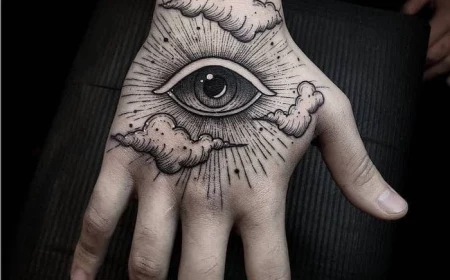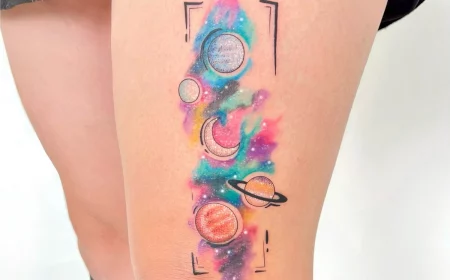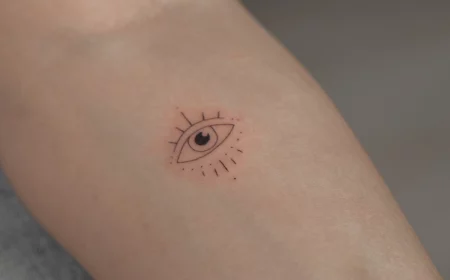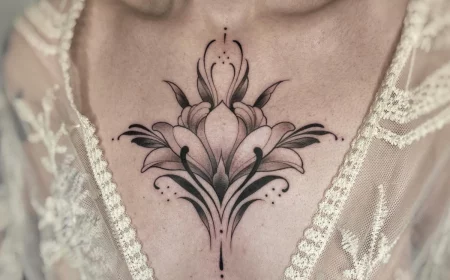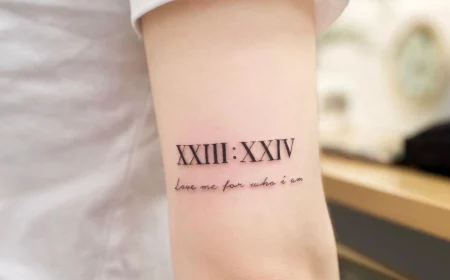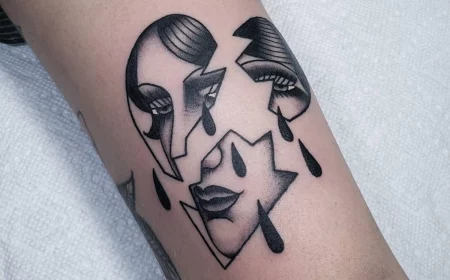Thinking About Matching Tattoos? Read This First.
For years and years, I’ve had all sorts of people walk through my studio doors. But honestly, the ones that always stick with me are the pairs. You’ve got couples, siblings, and best friends who have been joined at the hip since they were kids. They all come in with this incredible, invisible bond, and they want my help to make it something they can see and touch. A matching tattoo isn’t just about getting some cool ink; it’s a pact. It’s a bigger deal than most people realize when they’re just scrolling through social media for ideas. And that’s why we need to have a real talk. Not about what’s trendy, but about what makes a matching tattoo actually last—both on your skin and in its meaning.
In this article
I’ve walked hundreds of pairs through this exact process. I’ve celebrated their stories and helped them find a middle ground when their ideas were worlds apart. My job isn’t just to operate a tattoo machine; it’s to make sure the art you choose today is something you’ll still be proud of in ten, twenty, or even fifty years. So, this isn’t just a gallery of pictures. This is the full-on consultation I give my own clients, designed to help you get the art, the science, and the commitment behind planning your forever tattoos.
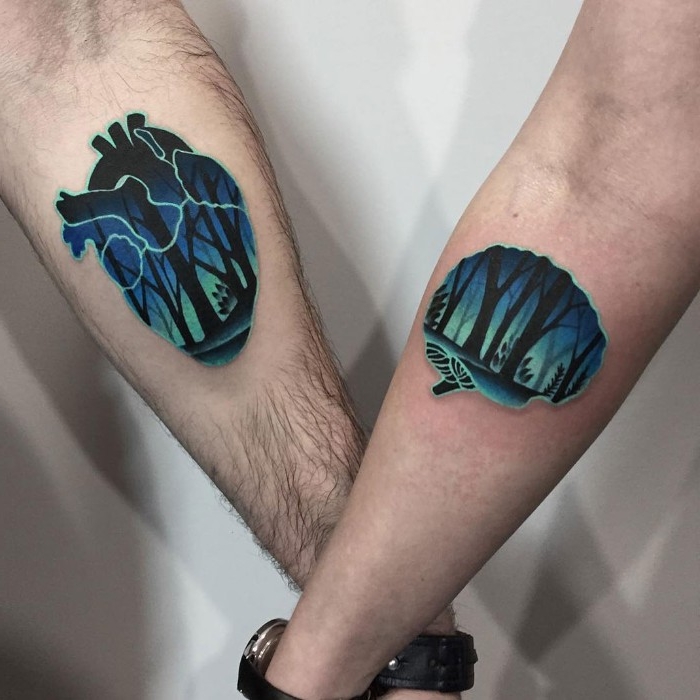
First Things First: Your Skin, Ink, and Time
Before a single drop of ink is on the table, we have to talk about the canvas itself. Your skin is a living, breathing organ that changes over time. A design that looks razor-sharp on an iPad screen will behave very differently on a human body. Getting this is the absolute first step to getting a tattoo that ages as gracefully as your bond.
The Truth About Skin
Here’s a fact: no two people have the same skin. Not even twins. Things like your age, how much sun you get, your skin type (oily or dry), and where you put the tattoo will make a huge difference. When a couple comes in, one person might have thin, fair skin while the other has darker, tougher skin. The same needle with the same ink will naturally look a little different on each of them. It’s the artist’s job to plan for that.
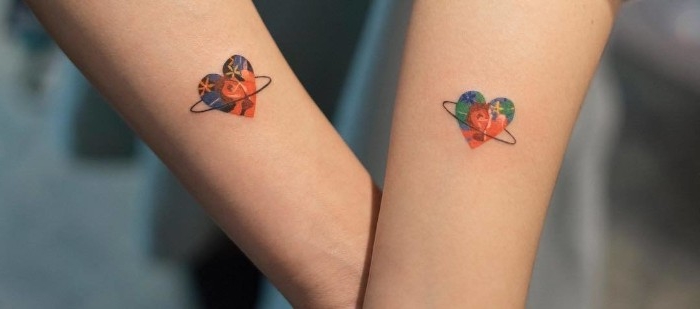
Placement is probably the biggest variable of all. Areas that see a lot of friction or sun are tattoo tough spots. Think hands, feet, and fingers. The skin there regenerates super fast, and they’re always moving, rubbing against things. A super delicate, fine-line tattoo on the side of your finger might look amazing on day one, but I’m always upfront with my clients: expect it to fade and blur within just a few years. It’s going to need touch-ups, period.
On the other hand, tattoos on your torso, upper arms, or thighs hold up way better because the skin is more stable and usually shielded from the sun. So when you’re planning a matching piece, think about your lifestyles. If one of you is a construction worker and the other is an office manager, a forearm tattoo will age differently for both of you. We can account for this by designing with bolder lines that can take a beating or by making a pact to be diligent with sunscreen. It’s a practical chat, but it’s a crucial one.
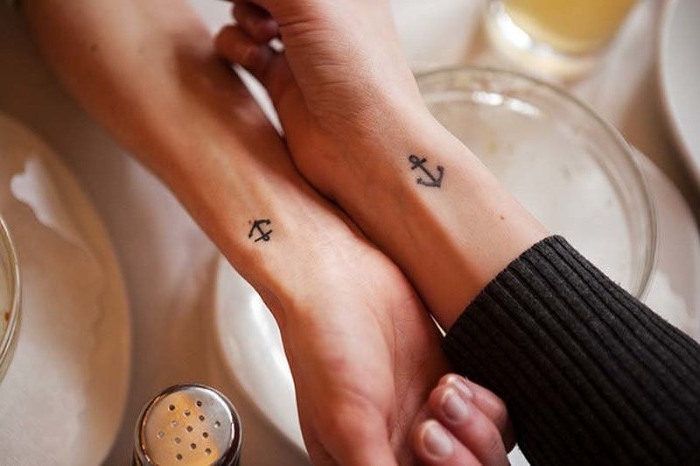
How Ink Actually Ages
Tattoo ink isn’t just paint on your skin’s surface. It’s a pigment that’s deposited into the dermis, the layer of skin just below the top one. Over time, your body’s immune system sees this pigment as a foreign invader and slowly tries to break it down. This is what causes tattoos to soften and spread out. It’s a completely natural process. A perfectly crisp, thin line will become a slightly thicker, softer line in about a decade. That’s why bold lines hold their integrity so much better than tiny, delicate ones.
This is my biggest piece of advice for people obsessed with those tiny, hyper-detailed micro-tattoos. A one-inch snowflake with intricate details might look incredible when it’s fresh. But in ten years? Those fine lines are very likely to merge and blur together. What was once beautiful detail can become an indistinct little blob. For matching tattoos that are meant to celebrate a lifelong bond, I always steer clients toward designs with some breathing room. We can still create a delicate feeling without using lines so fine they’re doomed to fade into obscurity.
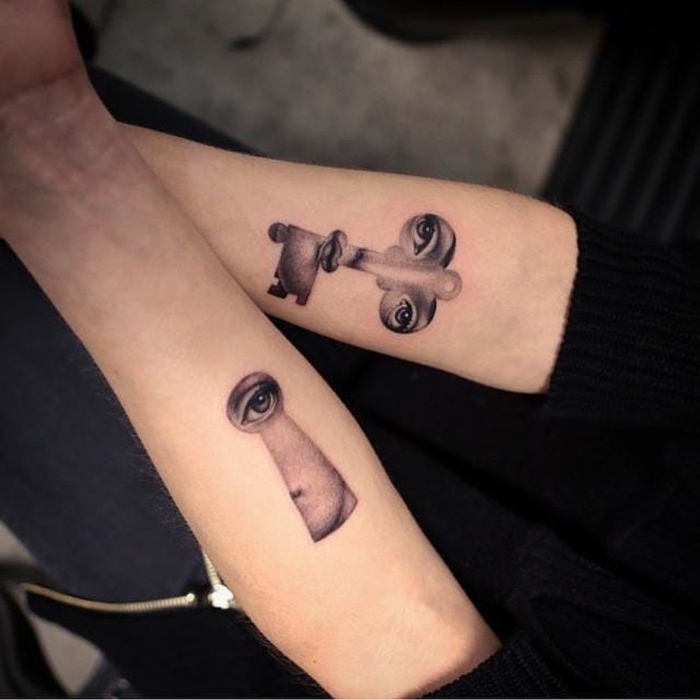
Good to know: Color ink also fades faster than black, especially when the sun hits it. Yellows, whites, and light blues are usually the first to go. If you’re set on matching color tattoos, putting them somewhere the sun doesn’t shine is your best bet. Or, we can build the design around a strong black outline and use color as an accent that can easily be touched up years from now if you want to.
The Design Process: Thinking Beyond Pinterest
So many people walk in with pictures of puzzle pieces or a lock and key. And there’s nothing wrong with those! But a matching tattoo is a chance to create something that is profoundly personal. My job as an artist is to listen to your story and help you translate it into a visual language that’s uniquely yours—one that you won’t find on the first page of a Google search.
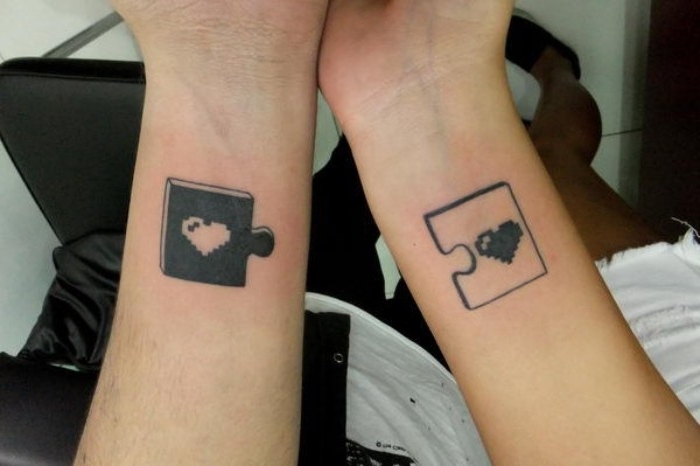
Why the Consultation Is Everything
Any tattoo artist worth their salt will insist on a consultation before the appointment. This is where the real work begins. It’s not just me asking, “So, what do you want?” It’s about asking, “What does this relationship actually mean to you?”
I once worked with two brothers who wanted to honor their late father, who was a carpenter. Their first idea was a simple hammer. But after talking for a while, I learned their dad’s favorite type of wood to work with was oak. We ended up designing two different woodworking tools—a chisel and a plane—each wrapped in oak leaves. The tattoos weren’t identical, but they were deeply connected by theme, style, and meaning. That’s the goal: to find a symbol that belongs to you and you alone.
To make the most of this chat (which usually takes about 30-60 minutes), it helps to come prepared. A quick tip:
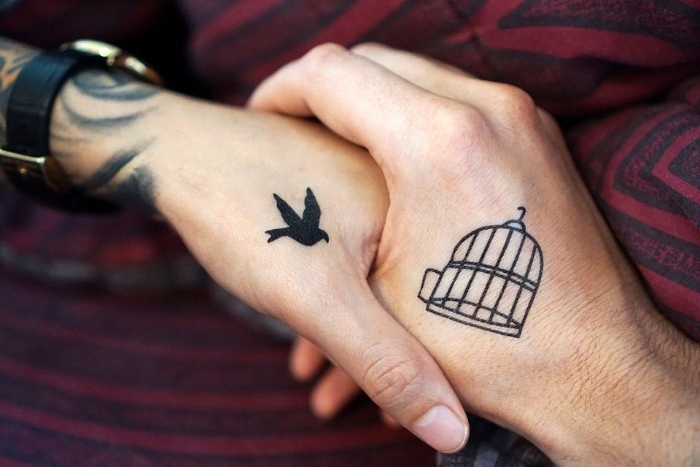
- Bring a few reference images: Not just of tattoos, but of anything that inspires the design (a photo, a pattern, a piece of art).
- Know your placement ideas: Have a primary and a backup spot in mind.
- Have a rough budget: It helps the artist design something that fits your price point.
- Think about the ‘feeling’: Write down a few words that describe the emotion you want to capture. Is it about strength, adventure, comfort, or humor?
Cool Ways to Create Connected Designs
Matching doesn’t have to mean identical copies. In fact, some of the most compelling paired tattoos are complementary, not clones.
- Complementary Halves: A classic for a reason. One person gets the sun, the other gets the moon. One gets mountains, the other gets the ocean. The secret here is ensuring they are designed in the exact same artistic style. The line weight, shading, and colors should all match. They look like complete, beautiful tattoos on their own, but when they’re together, they tell a bigger story.
- A Shared Style: Sometimes, the connection is simply the artist’s touch. I’ve tattooed best friends who got totally different subjects—say, a bird and a flower—but because I did them on the same day with the same style and technique, they are forever linked. Their connection is the shared experience and that consistent aesthetic.
- Theme and Variation: This is a fantastic approach for families. I once designed three different native birds from their home region for a family of three. Each person picked the bird they connected with most, and we drew them all perched on a branch from the same type of tree. The tattoos were individual, but the theme of home and nature, all done in a classic style, tied them all together.
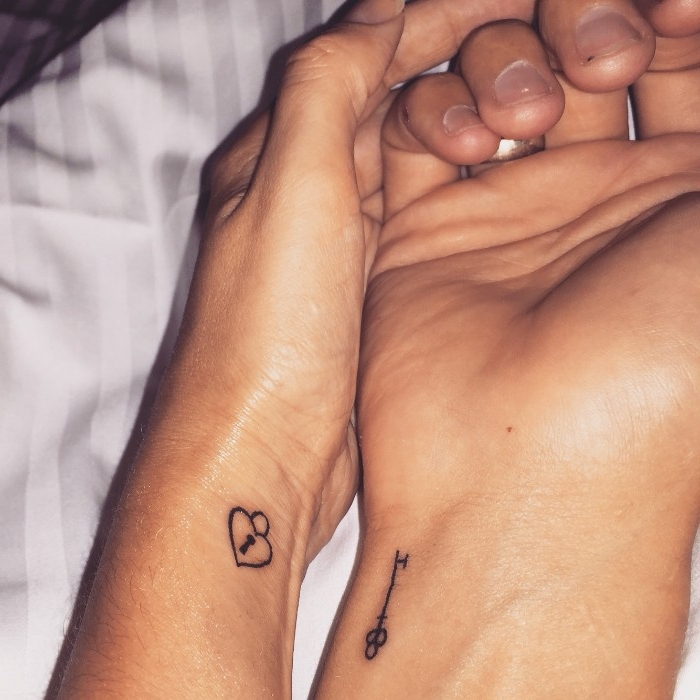
Choosing a Style That Lasts
The style of tattooing you pick is just as big a decision as the design itself. Different styles were developed for different reasons, and they age in very different ways.
For a tattoo that’s built like a tank, you can’t go wrong with American Traditional. This style was literally made to last on sailors traveling the world. It uses bold black outlines, a limited but bright color palette, and simple, easy-to-read imagery. Anchors, hearts, and eagles are classics because they look great from across a room and still look great fifty years later. For matching tattoos, its clarity is unbeatable.
If you’re after that delicate, subtle vibe, you’re probably looking at Fine-Line or Single Needle work. It’s perfect for small scripts, tiny florals, and minimalist symbols. But, and this is a big but, it demands an expert hand. If the artist goes a tiny bit too deep, the line will “blow out” and look blurry under the skin. Too shallow, and it’ll all but disappear as it heals. I always tell clients that fine-line tattoos are a high-maintenance choice that will almost certainly need a touch-up down the road.
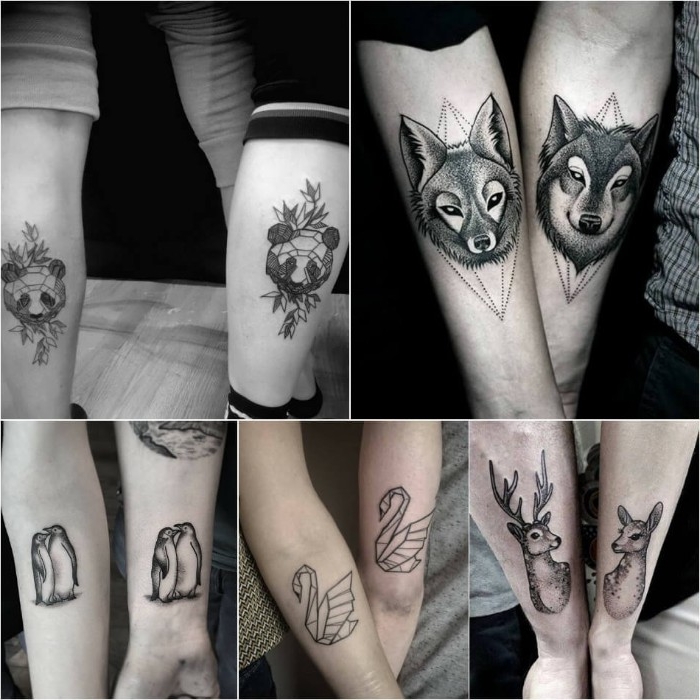
For a seriously modern aesthetic, you might look at Geometric and Blackwork styles. These use crisp lines, patterns, and solid black shapes. They are fantastic for matching tattoos because you can create two unique patterns that share a common design language or even fit together like puzzle pieces. The solid black in blackwork tattoos holds up incredibly well and often looks even darker and more solid as it settles into the skin over the years.
The Nitty-Gritty: Placement, Cost, and Finding Your Artist
Okay, you have an idea and a style. Now for the logistics. This is where the dream gets real. Being honest about placement, budget, and finding the right pro will save you a world of regret.
Heads Up: Three Common Mistakes to Avoid
- The Mistake: Getting the design too small and detailed. You want to see every little line of that tiny landscape.
- The Fix: Trust your artist and go about 20% bigger than you initially think. That extra space will ensure the details stay clear as the tattoo ages.
- The Mistake: Putting a delicate tattoo on your hands, feet, or fingers because it looks cool online.
- The Fix: Ask your artist for a more durable placement that will protect your investment, like the inner forearm, bicep, or upper back.
- The Mistake: Not discussing the budget upfront.
- The Fix: Be open about what you can spend. A good artist can often simplify a design to fit your budget without sacrificing the core idea.
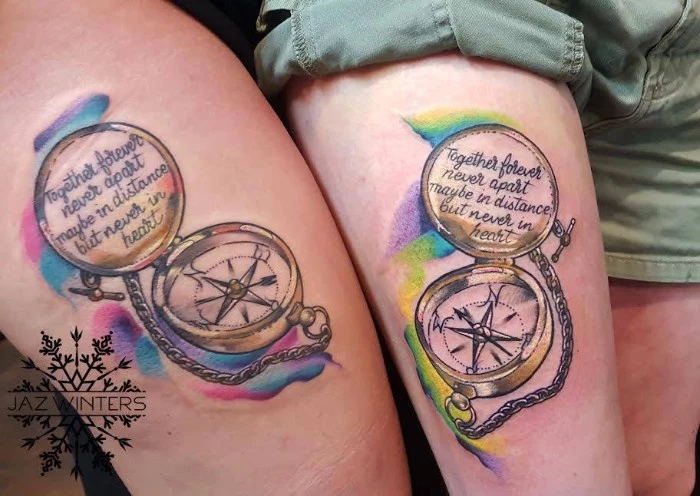
The Real Talk on Cost
Let’s be direct: good tattoos aren’t cheap, and cheap tattoos aren’t good. When you pay for a quality tattoo, you aren’t just paying for an hour of someone’s time. You’re paying for their years of training, single-use sterile equipment (needles, ink caps, etc.), medical-grade cleaning supplies to keep you safe, high-end inks that stay vibrant, and the rent on a clean, licensed, and insured studio.
So, what should you expect? Most reputable studios have a minimum price of around $100 to $200, which covers the sterile setup for even the smallest tattoo. For custom work, most artists charge by the hour, typically anywhere from $150 to over $300 an hour, depending on their skill and demand. And heads up, you’ll almost always be asked to put down a non-refundable deposit to book your appointment, which goes toward the final cost.
How to Pick Your Artist
Finding the right artist is everything. Their portfolio is their resume, so start there. But don’t just look at the shiny, fresh photos on their Instagram. Here’s a quick guide:
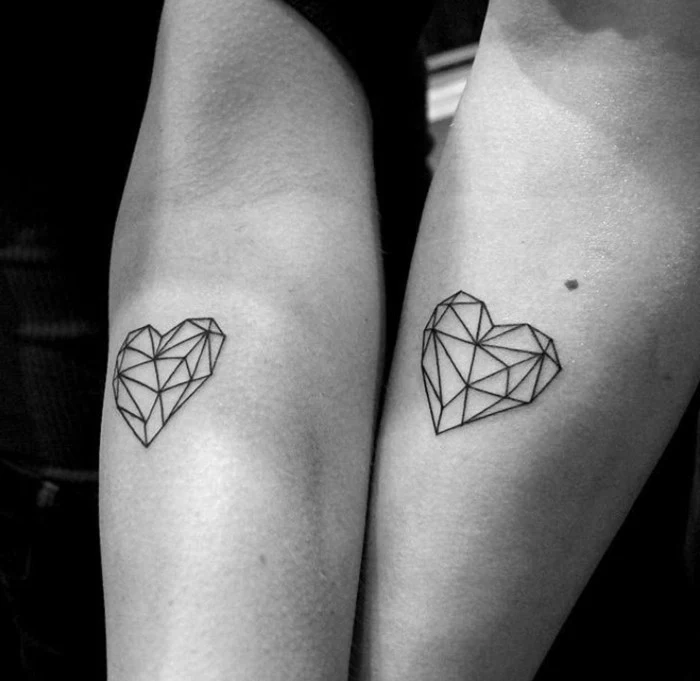
- Search the right hashtags. Look for things like
[stylename]tattoo and
[yourcity]tattoo (for example,
americantraditionaltattoo or
finelinenyc).
- Hunt for HEALED photos! This is the most important part. Any artist who is truly proud of their work will show how it looks after it has settled into the skin for months or years. This tells you about their real skill, not just their photography skills.
- Read their “Booking” info. It’s usually in their bio or a story highlight. If their process is clear, professional, and they talk about consultations, that’s an excellent sign. A popular artist can have a waitlist that’s months long, so plan ahead!
The Real Deal on Safety and Aftercare
Okay, time to get serious for a minute. A tattoo is an artistic procedure, but it’s also creating an open wound. Your safety and the long-term health of your skin are the absolute top priority.
Studio Safety Isn’t Optional
A professional studio should feel as clean as a doctor’s office. And here’s a non-negotiable rule: all needles must be brand new, sterile, and single-use. The artist should open the sterile needle packet in front of you. If they don’t, get up and leave. Seriously. Reusing needles is how bloodborne pathogens are transmitted, and it’s absolute malpractice. Any other equipment should either be disposable or sterilized in a machine called an autoclave. If you ask about their sterilization process and they get defensive, that’s a major red flag.
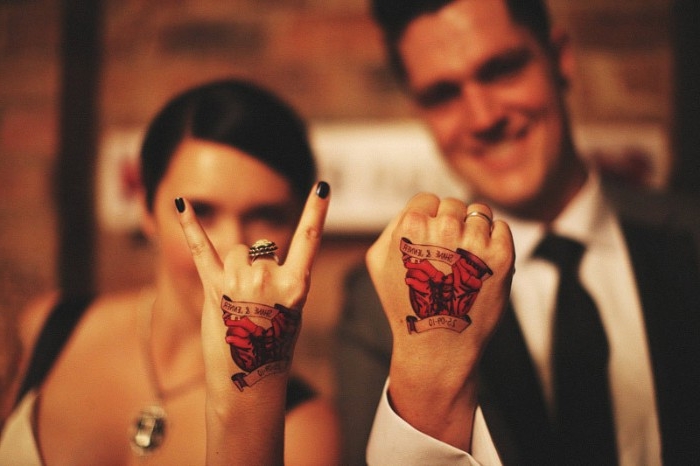
Healing Is a Team Sport
I can lay down a perfect tattoo, but if you don’t take care of it, it won’t heal well. For matching tattoos, you both have to be on the same page with aftercare. Your artist will give you specific instructions, but here’s the gist of what to expect and what you’ll need.
Your Mini Aftercare Shopping List:
- Unscented antibacterial soap (like Dial Gold)
- A recommended healing ointment (many artists suggest products like Aquaphor or specialized tattoo balms like Hustle Butter)
- A bottle of plain, unscented lotion for later (like Lubriderm or Cetaphil)
The Healing Timeline (A General Guide):
- Day 1: Your artist will wrap the tattoo. Leave the wrap on for the time they specify (usually a few hours). When you take it off, gently wash the tattoo with the antibacterial soap and warm water, pat it dry with a clean paper towel, and apply a very thin layer of ointment.
- Days 2-4: This is the
Inspiration Gallery
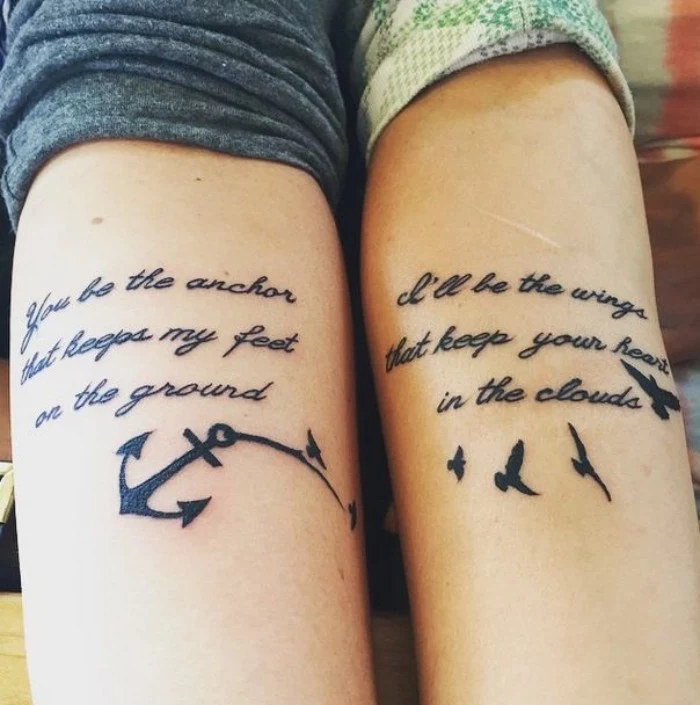
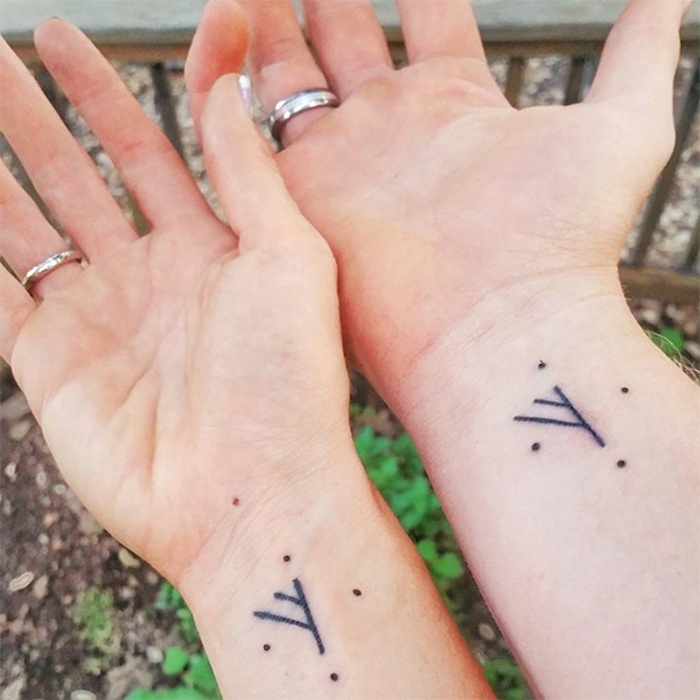
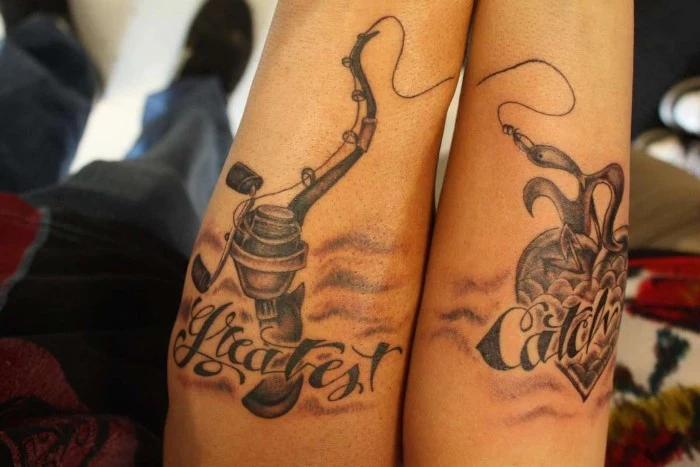
Identical vs. Complementary: An identical tattoo is a shared symbol, like two matching anchors. A complementary design features two halves of a whole, such as a sun and a moon. While identical tattoos emphasize unity, complementary ones celebrate individuality within the partnership. Discuss which narrative best fits your bond before settling on a final design.
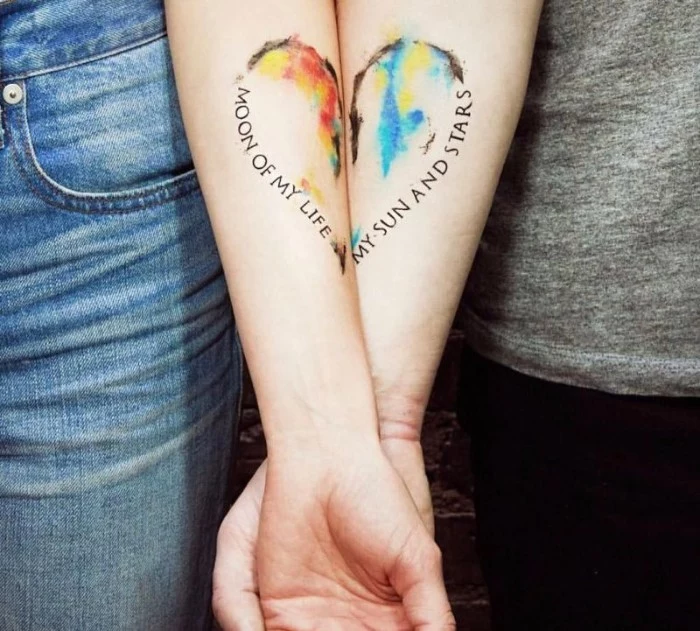
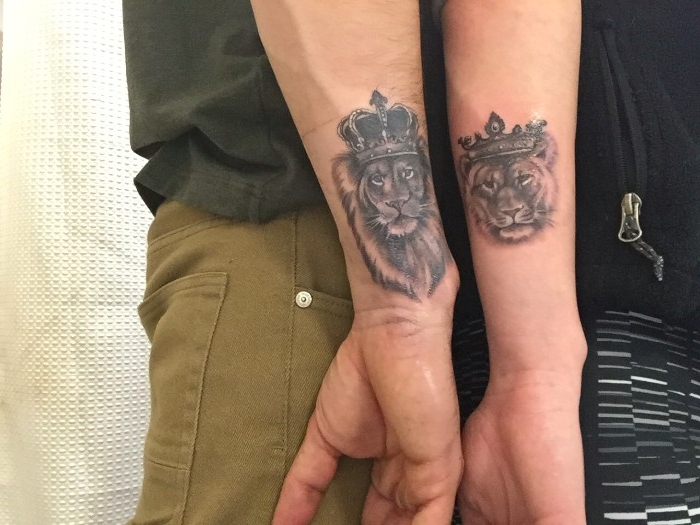
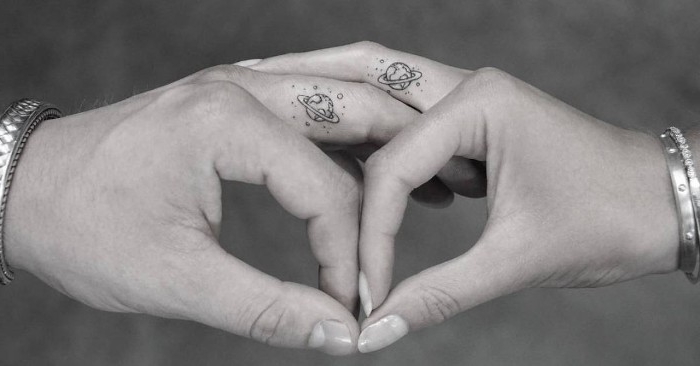
Over 75% of tattoo removals are for names of ex-partners. A symbol that represents your bond is often a more timeless choice than lettering.
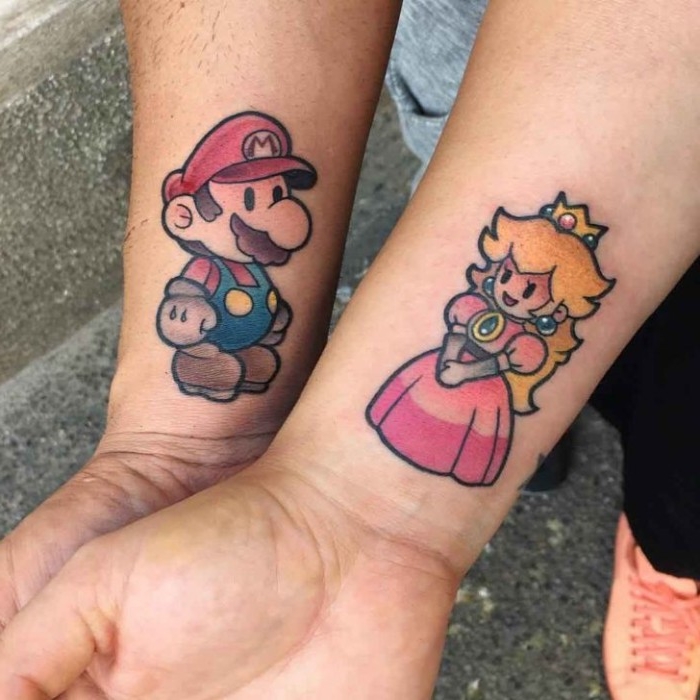

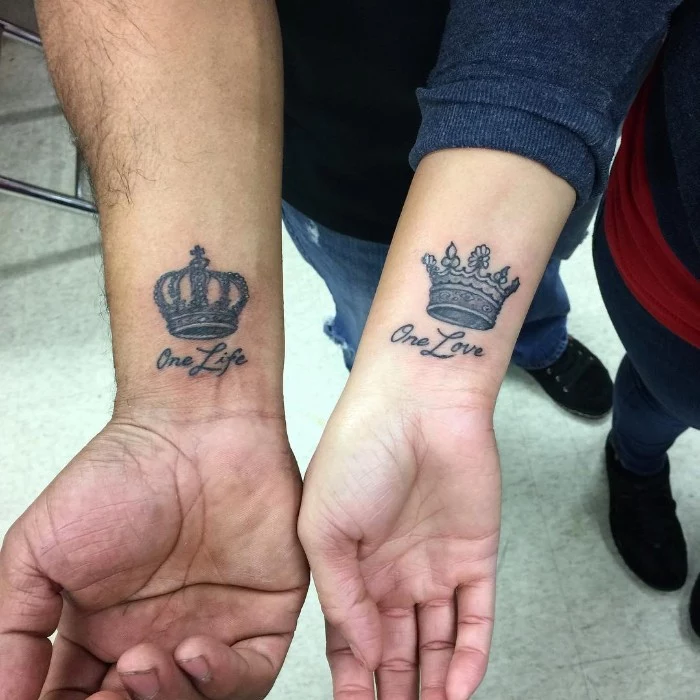
Thinking about text?
Remember that fine-line script can blur over time, especially on areas with thin skin like the inner wrist or fingers. For matching quotes, consider a slightly bolder, clearer font. Your artist can show you how different styles will age, ensuring your meaningful words remain legible for decades to come.
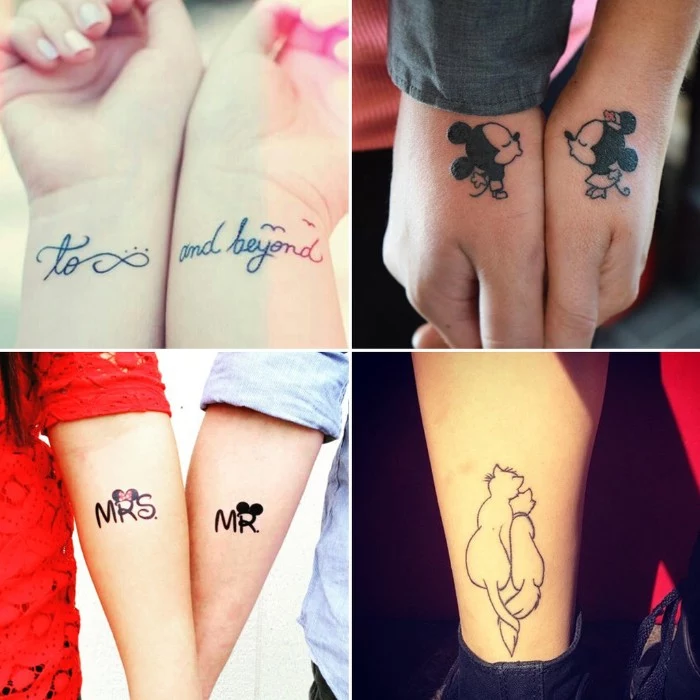
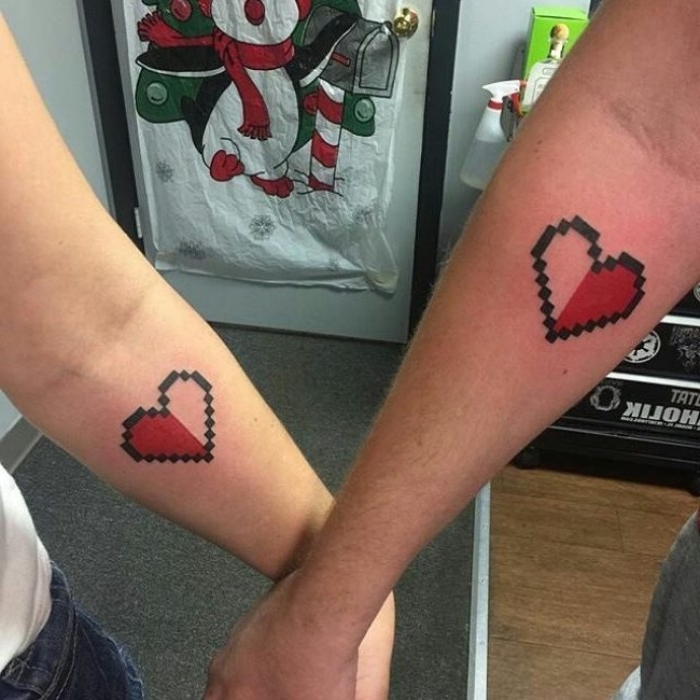
When booking your appointment, be sure to mention that you are a pair coming in for matching work. Many studios will schedule you with the same artist for consistency, or with two artists working simultaneously. This ensures a shared experience and, more importantly, a cohesive final look.
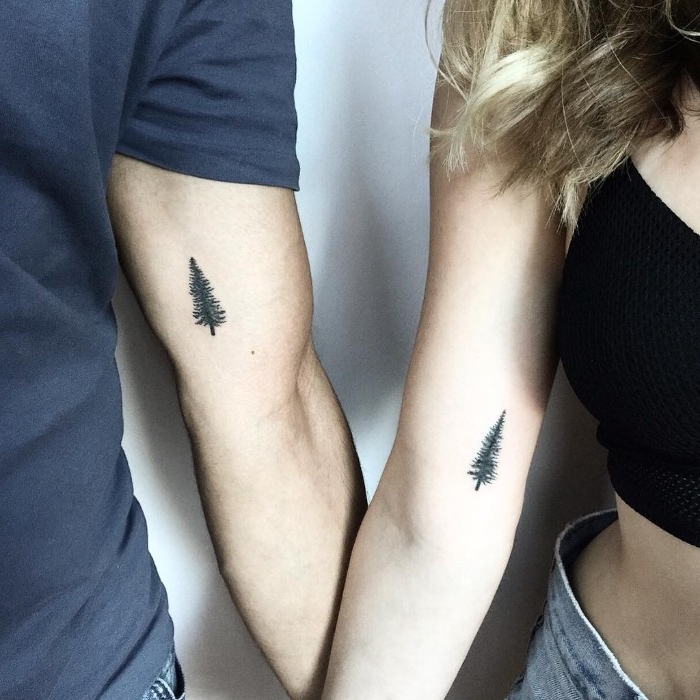
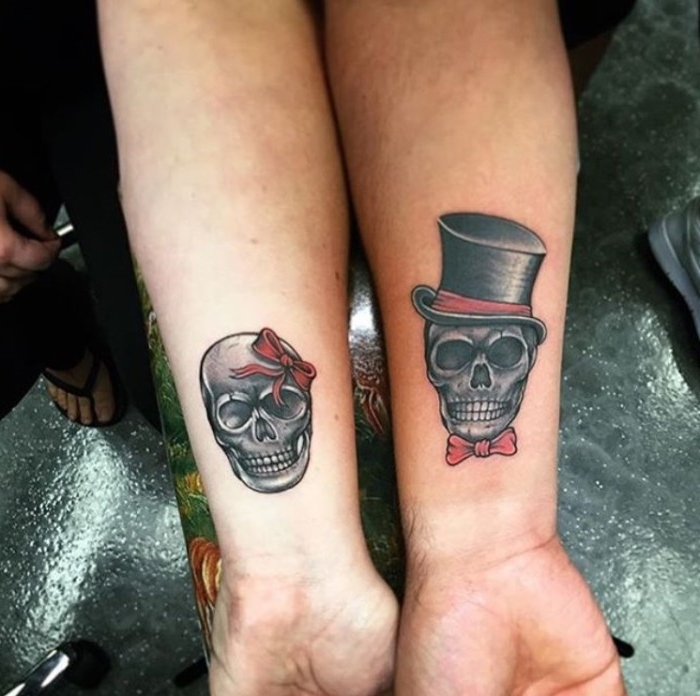

- Unified style, even with different symbols.
- Shared color palette.
- Consistent line weight and shading.
The secret? Using the same artist for both tattoos. This is the single best way to ensure your matching tattoos truly feel connected, even if the designs themselves aren’t identical.
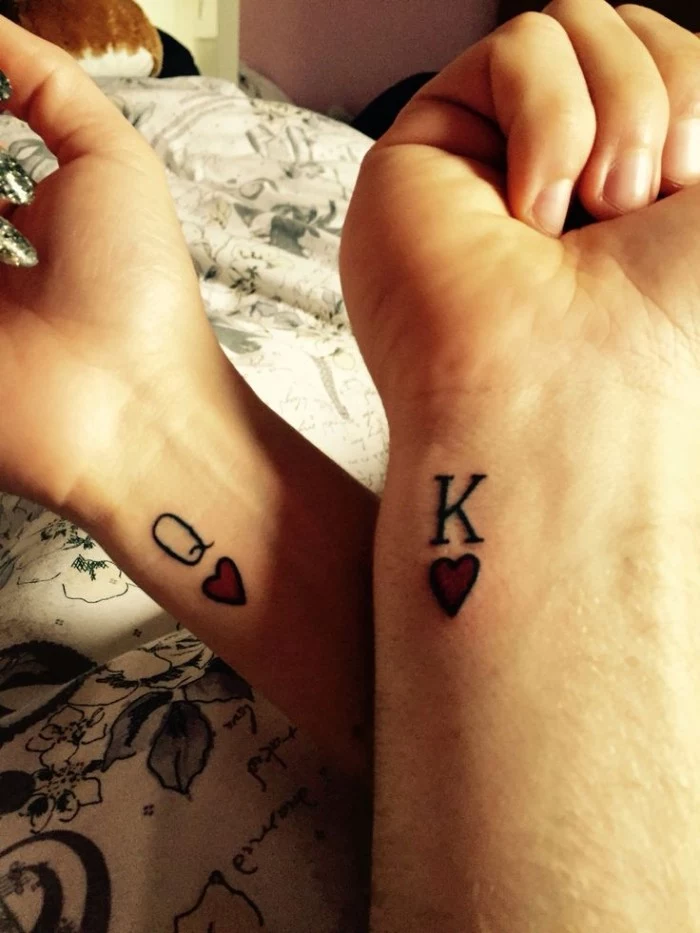
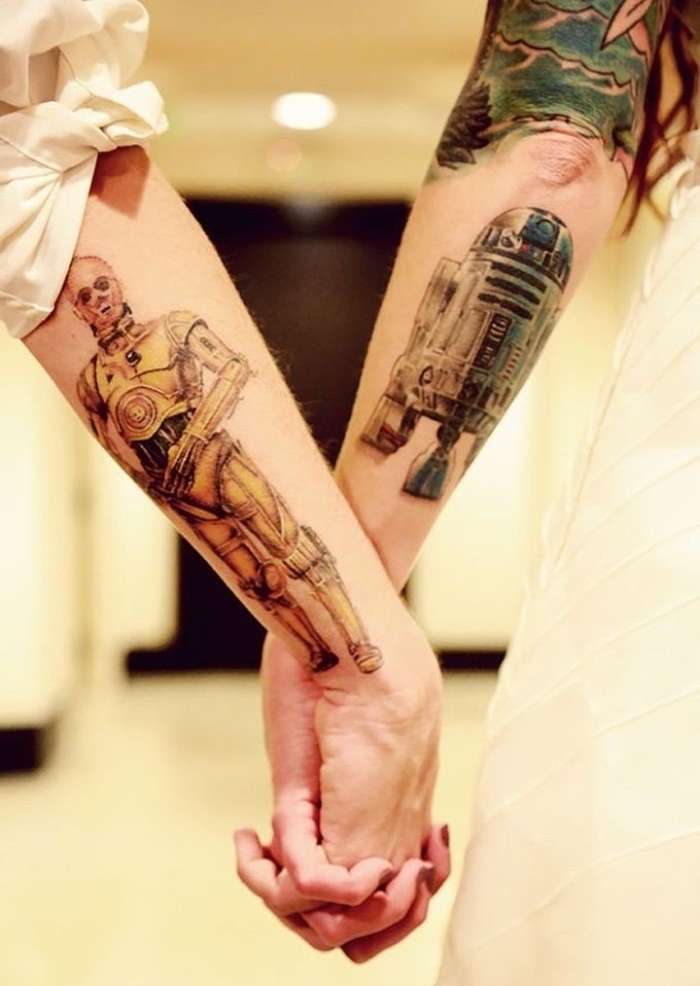

A crucial point on placement: Avoid designs that only look ‘complete’ when you are physically standing or sitting side-by-side. Your tattoo should look beautiful and intentional on its own. The ‘matching’ aspect should be a bonus, not a requirement for the art to make sense.
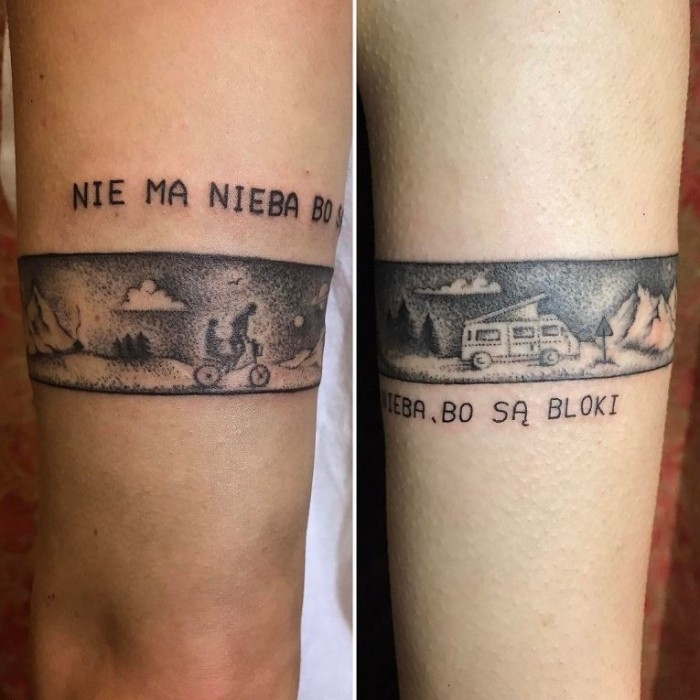
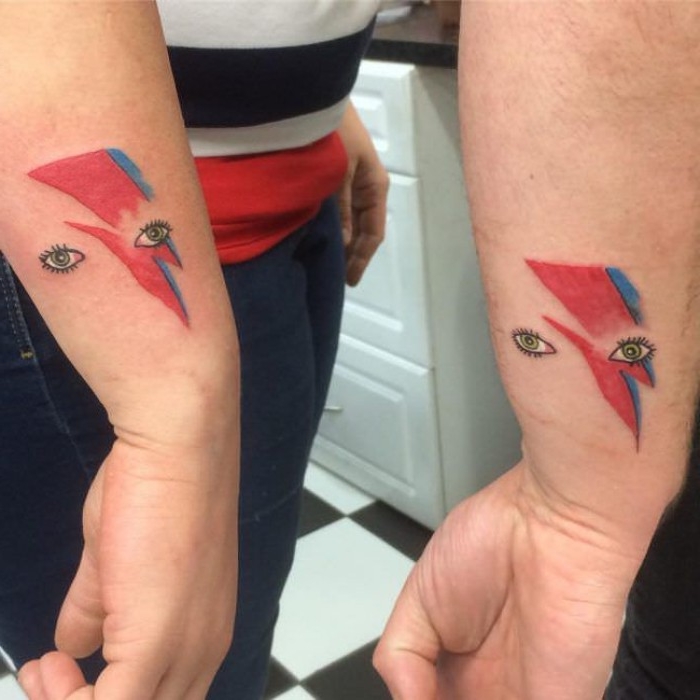
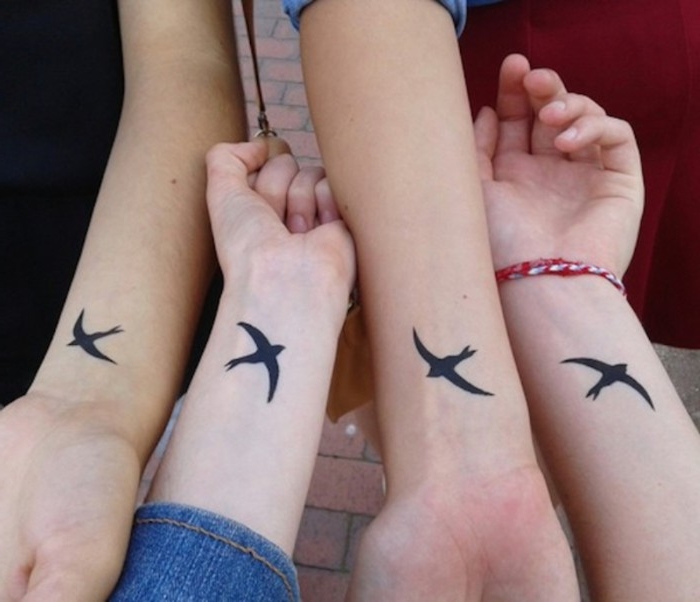
The healing process is a shared journey. Here’s a joint aftercare checklist to follow for the first two weeks:
- Gently wash with unscented antibacterial soap twice a day.
- Pat dry with a clean paper towel—no sharing bath towels!
- Apply a thin layer of a recommended ointment like Aquaphor or Hustle Butter Deluxe.
- Avoid sun exposure, swimming pools, and hot tubs together.
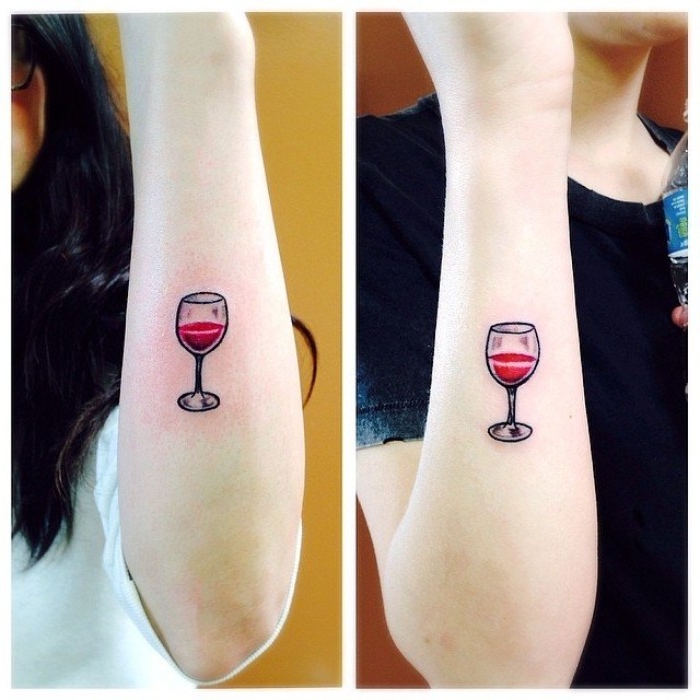
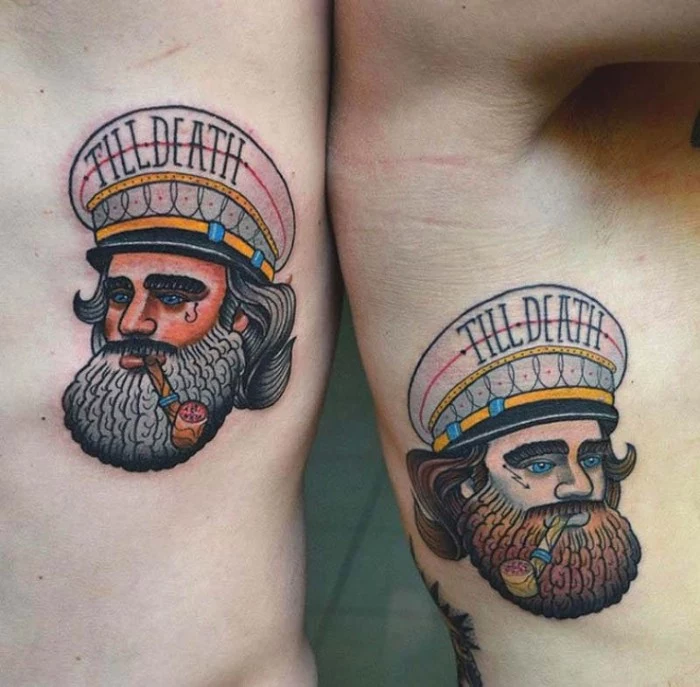
Explore the world of abstract matching tattoos. Instead of a concrete symbol, consider getting complementary watercolor splashes using the same color palette, or two unique geometric shapes designed with a similar ‘artistic DNA.’ This approach is deeply personal and less literal than classic motifs.
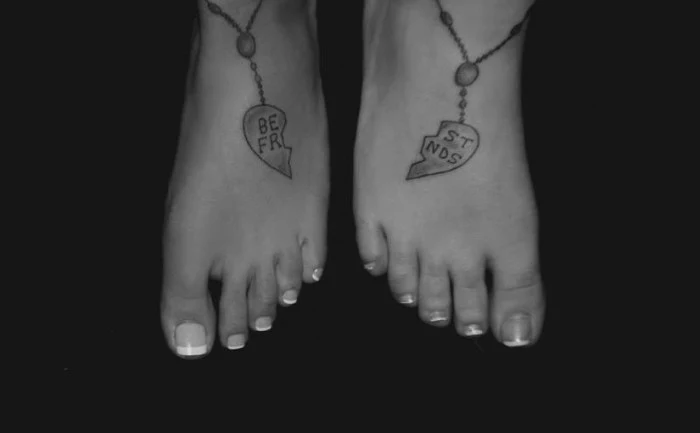
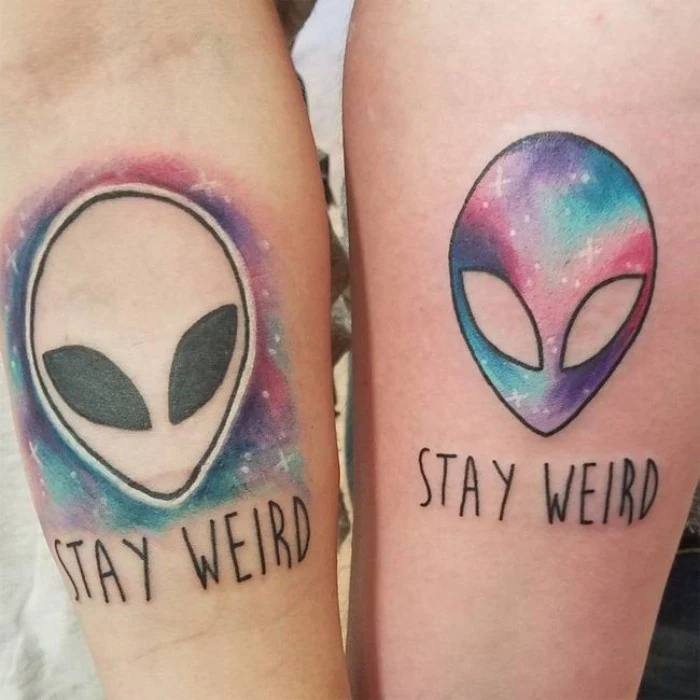
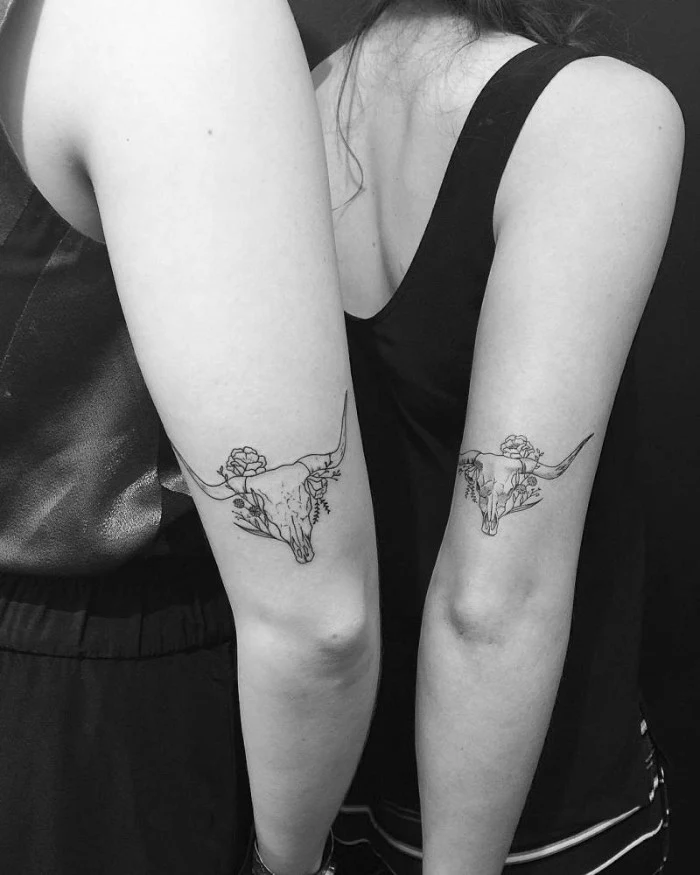
The rise of vegan-friendly inks, like those from brands such as World Famous Ink or Eternal Ink, means you can get your tattoo without compromising your ethical values. These inks contain no animal products (like glycerin from animal fat or bone char) and are never tested on animals.
This is a great point to discuss with your partner and artist during the consultation, ensuring the materials used align with your shared lifestyle and beliefs.
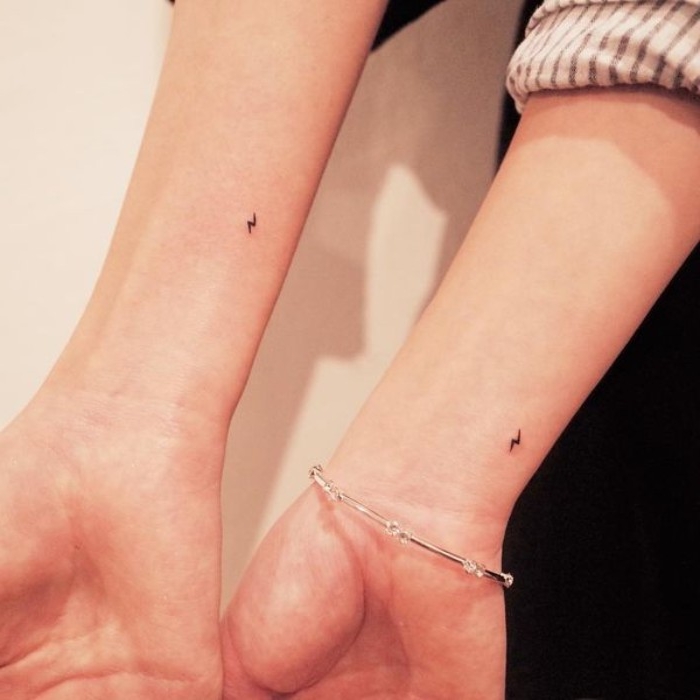
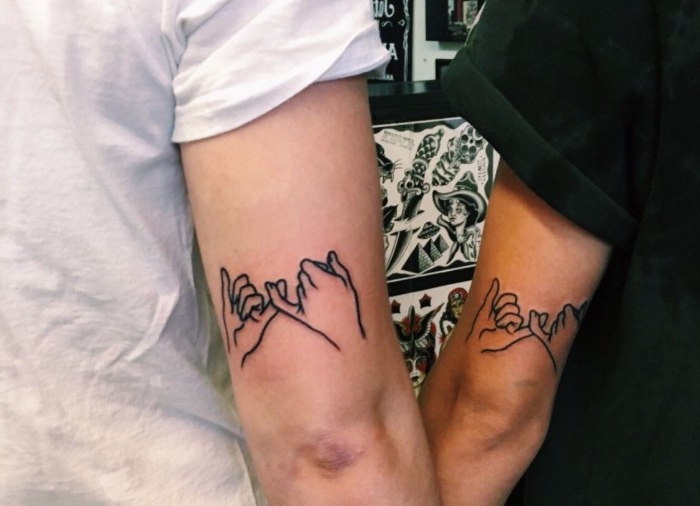
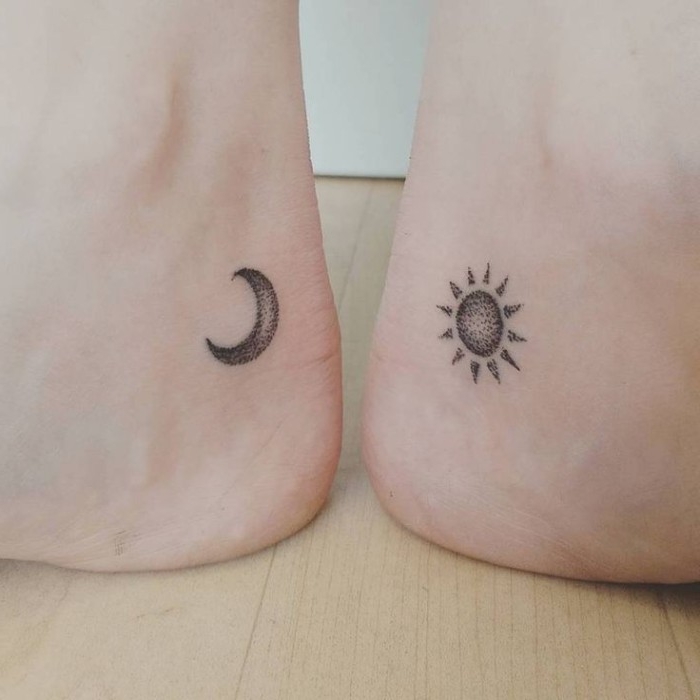
Do we get a discount if we come in as a pair?
Generally, no. You are paying for the artist’s time and skill for two separate tattoos, which often requires more complex setup and coordination. The price will be based on the size, detail, and time required for each individual piece. Budget for two full-price tattoos.
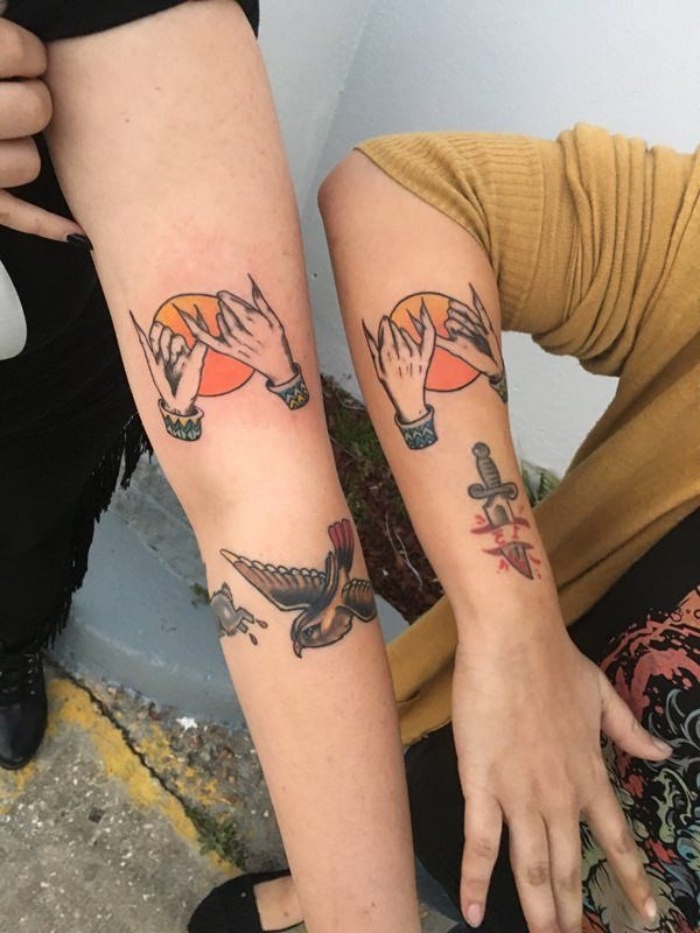
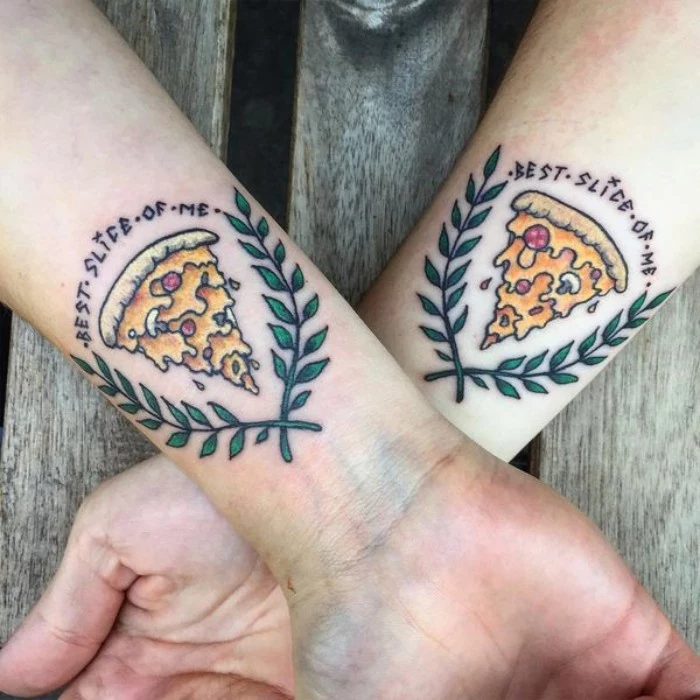
Beyond the lock and key, consider other symbolic pairings that tell a story. Think about a compass and a map, a lighthouse and a ship, or an arrow and a bow. These pairings offer a rich narrative about guidance, journeys, and partnership that you can personalize to reflect your own unique story.
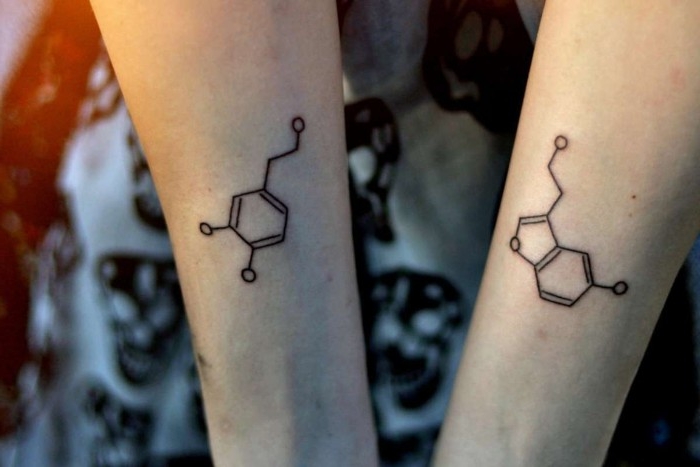
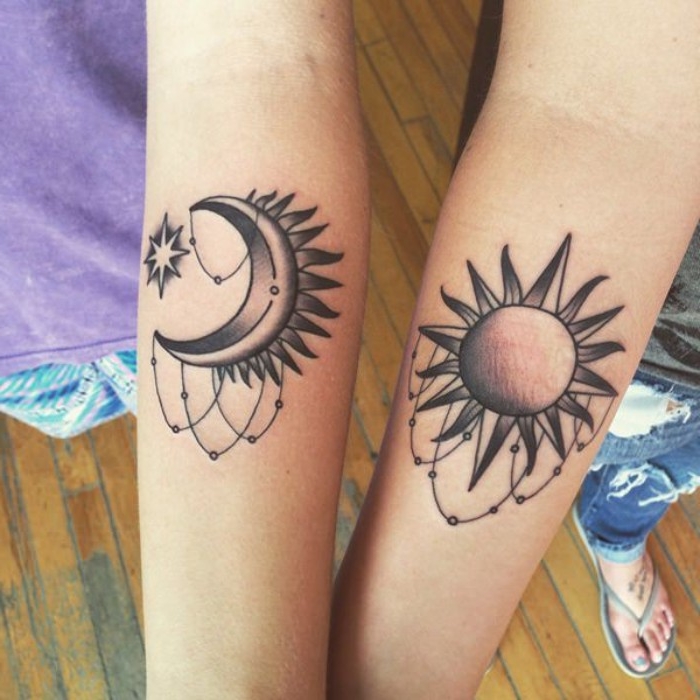

Pain Tolerance Varies: It’s a fact. One person might find a spot ticklish while the other finds it intensely painful. If one of you is particularly nervous, consider a less sensitive placement like the outer forearm or calf. Applying a topical numbing cream like Zensa about an hour before the session can also help take the edge off for the more sensitive partner.
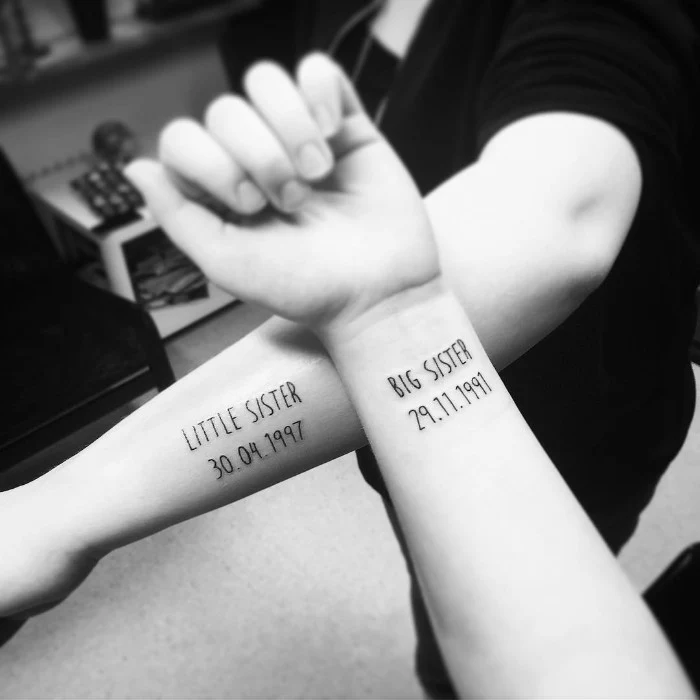
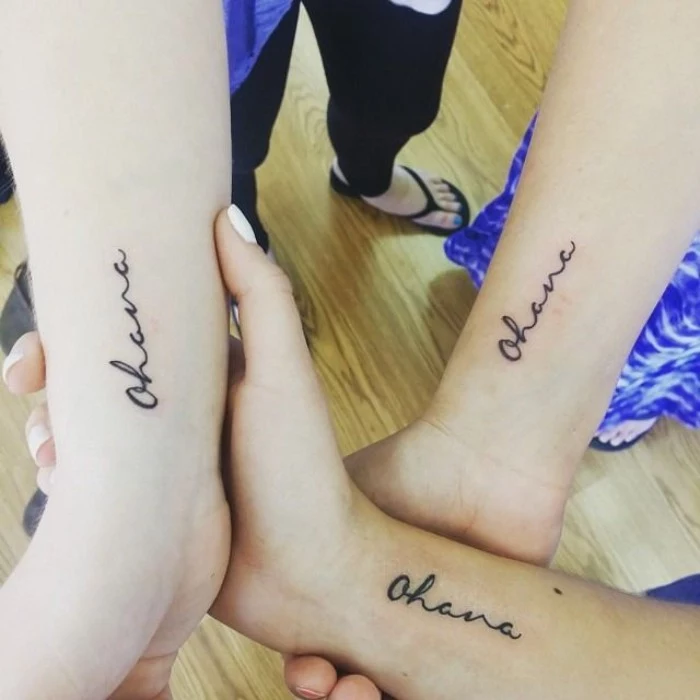
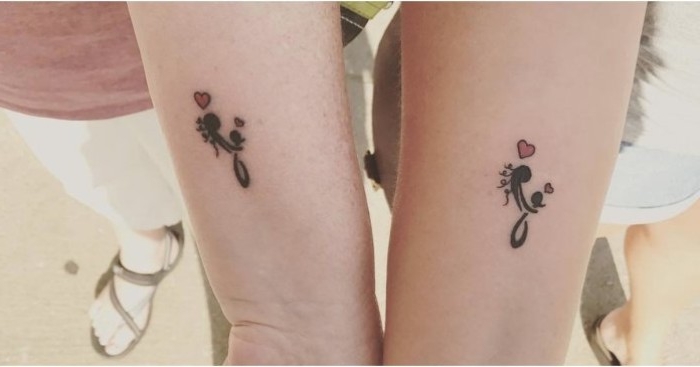
- Pick three words that define your relationship.
- Find a symbol from a shared memory (a concert, a trip, a favorite movie).
- Look at constellations—your own or just a favorite one.
- Consider flora or fauna that represents your personalities.
Use these prompts to start your brainstorming session. The best ideas come from your shared history, not just a quick online search.

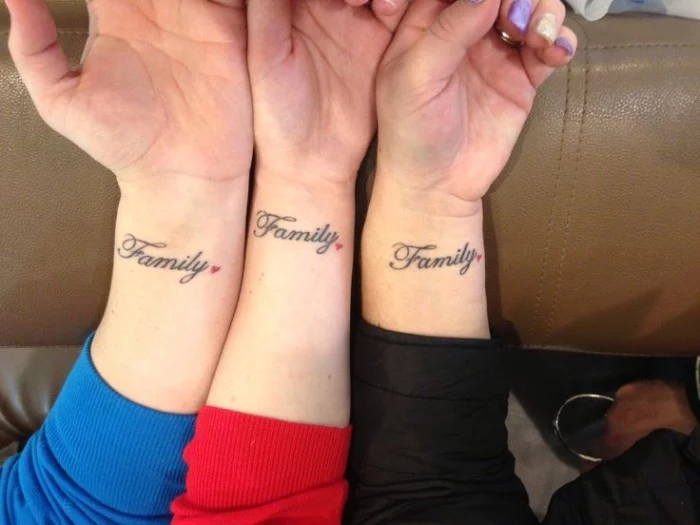
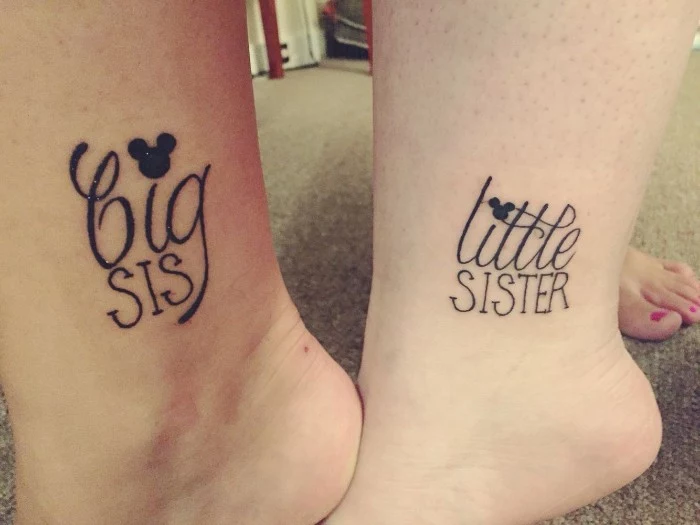
The delicate beauty of a single-needle tattoo is perfect for couples or friends seeking a subtle, elegant connection. These minimalist designs, created with just one needle, allow for incredible detail in a small space. They are discreet, professional, and focus on the meaning rather than making a loud statement.
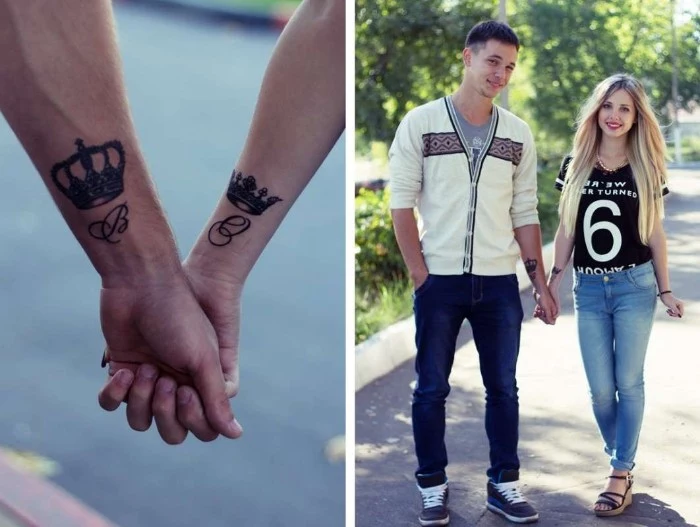
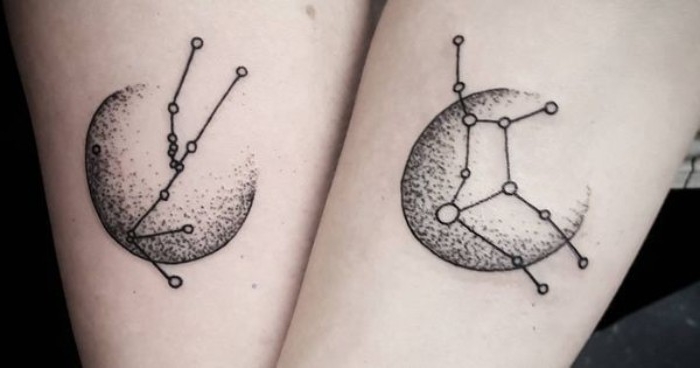
Color Tattoos: Offer vibrancy and emotion, but can be more prone to fading from sun exposure and may require more frequent touch-ups to stay bright.
Black and Grey: A timeless choice that often ages more gracefully. It relies on shading and line work, creating a classic, sophisticated look.
Discuss with your artist which option better suits your skin tones and long-term commitment to aftercare.
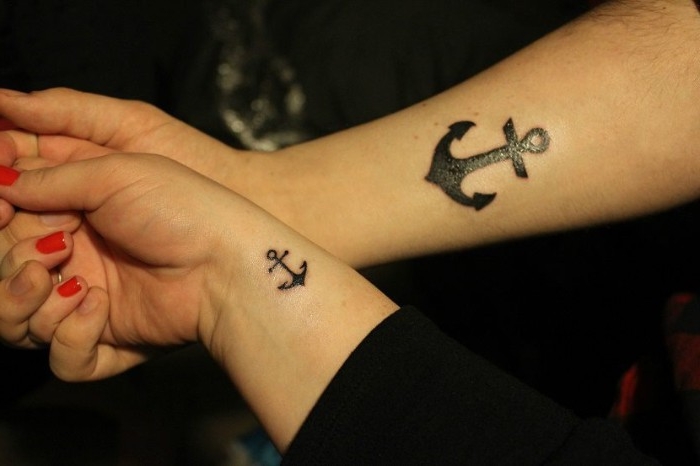
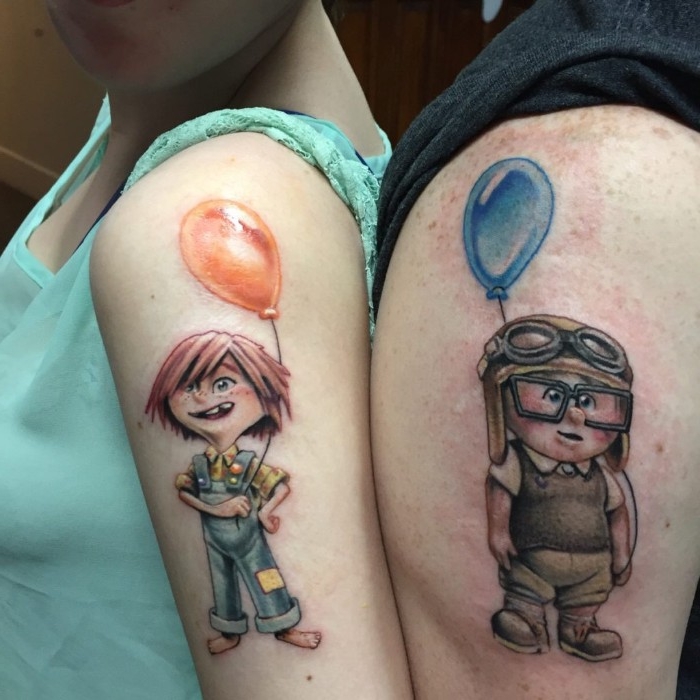
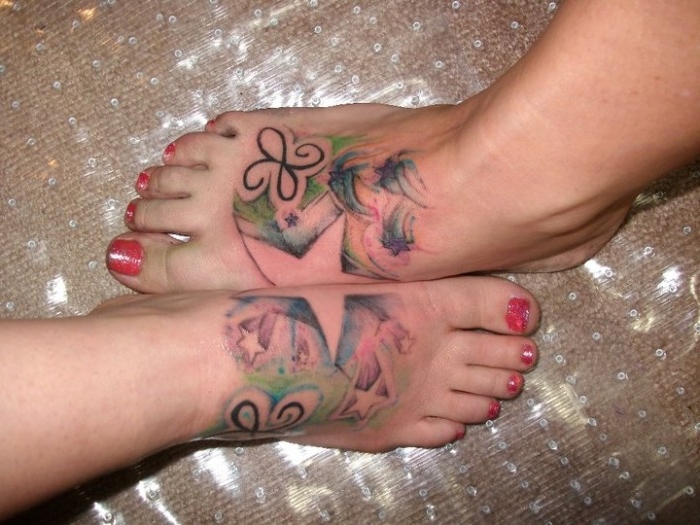
A 2017 study in ‘The Journal of Social and Personal Relationships’ found that couples who engage in ‘novel and arousing’ activities report higher levels of relationship satisfaction. Getting tattooed together definitely qualifies!
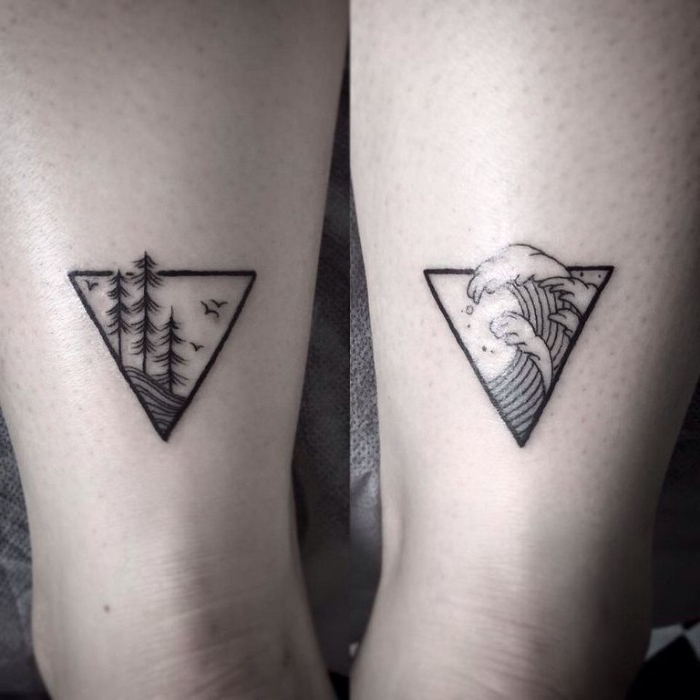
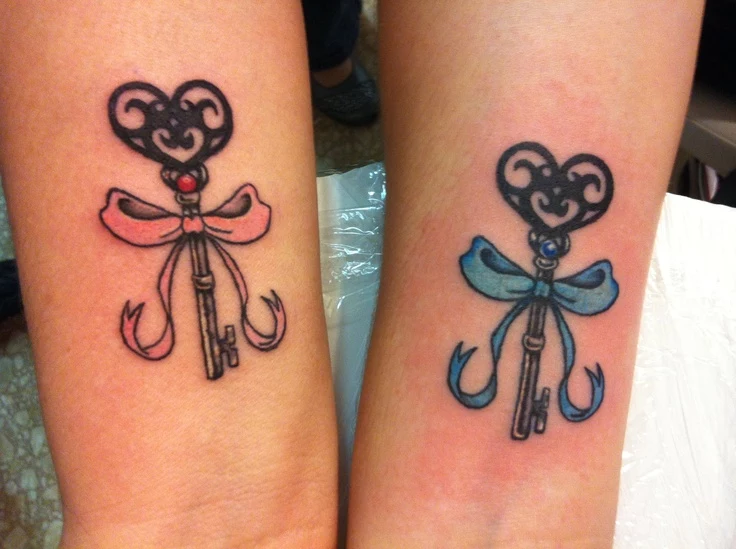
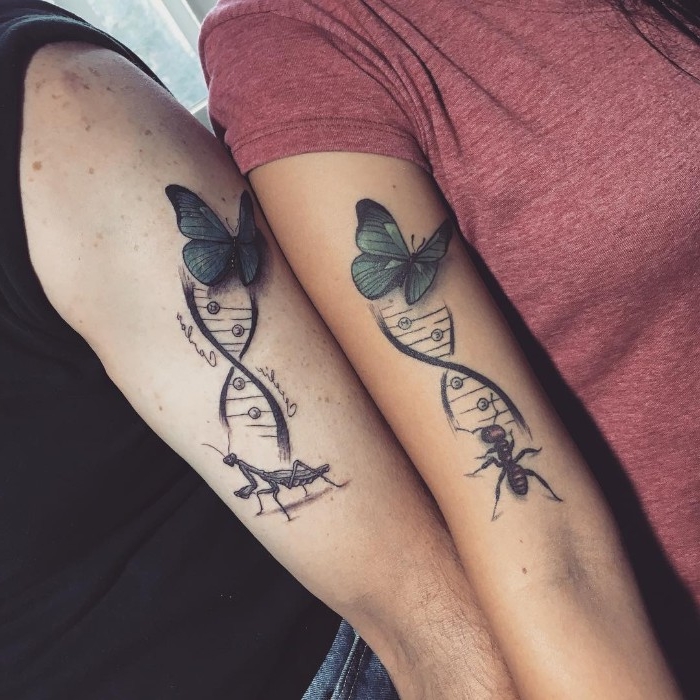
Don’t just copy a design you found on Pinterest. That tattoo belongs to someone else’s story. Use online galleries for inspiration, but then work with your artist to create a custom piece. A good artist will refuse to directly copy another’s work and will be excited to help you develop a unique symbol for your bond.
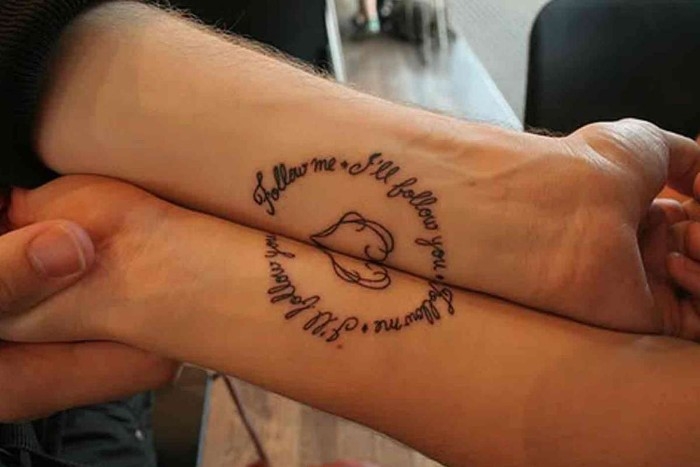
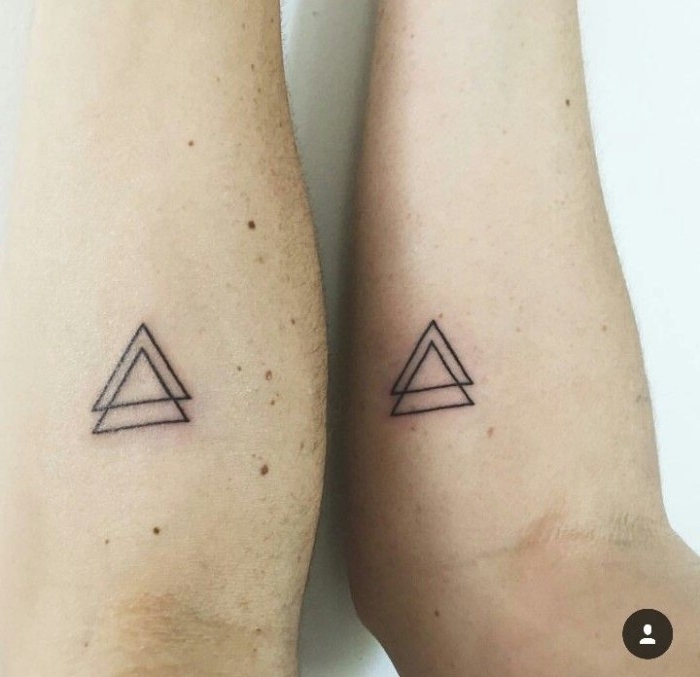
- Each of you should bring a government-issued ID.
- Wear comfortable clothing that allows easy access to the tattoo area.
- Bring snacks and a sugary drink to keep your blood sugar up.
- A phone charger and headphones can be helpful for longer sessions.
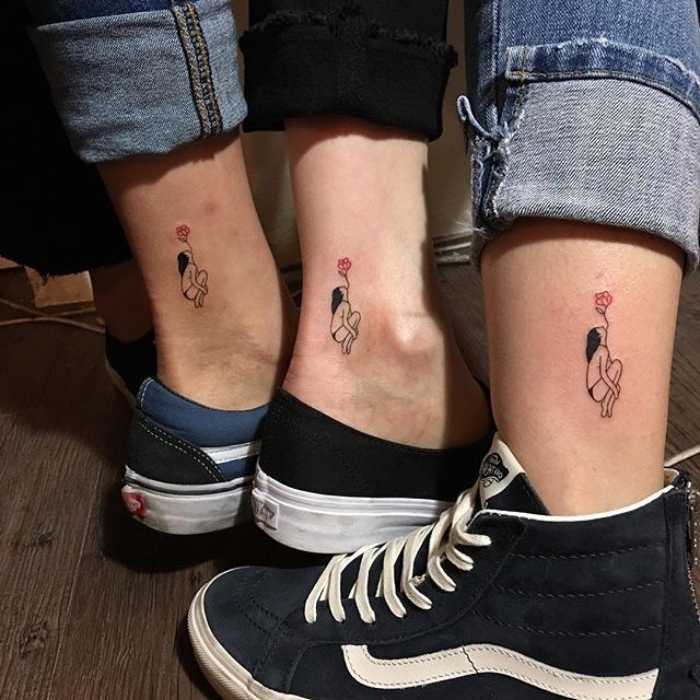
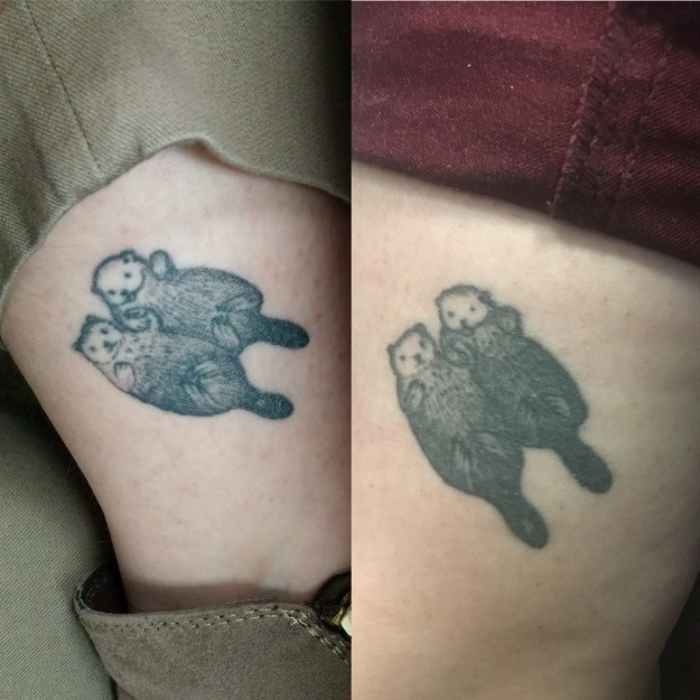
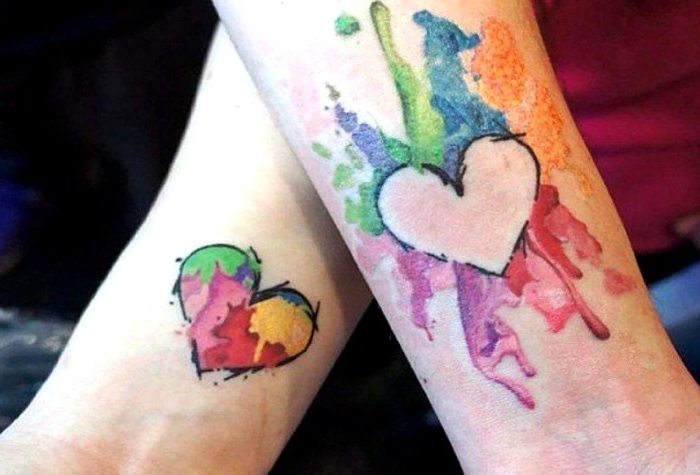
For a truly spontaneous and budget-friendly option, look for a studio’s ‘flash day.’ Artists prepare a sheet of pre-drawn designs at a set price. It’s a fun, ‘get-what-you-get’ experience where you and your partner can each pick a piece of art that speaks to you from the same sheet, creating an instant, artistic connection.
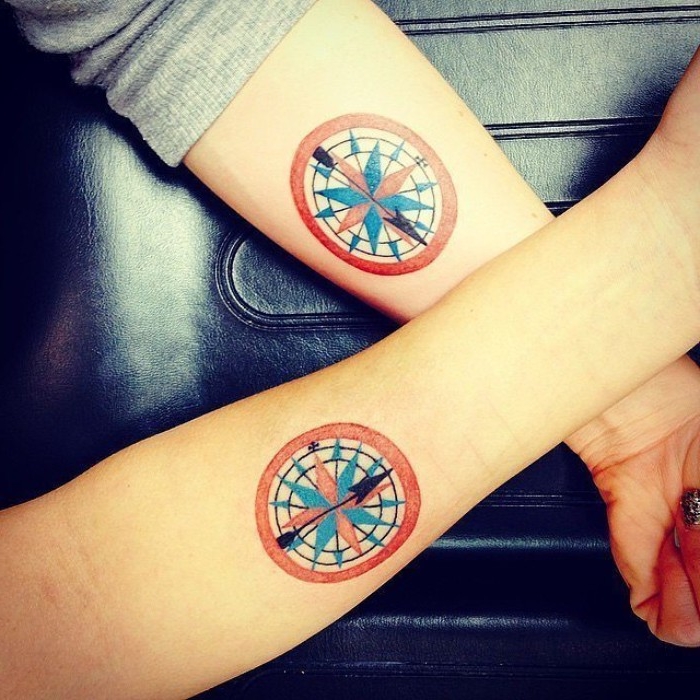
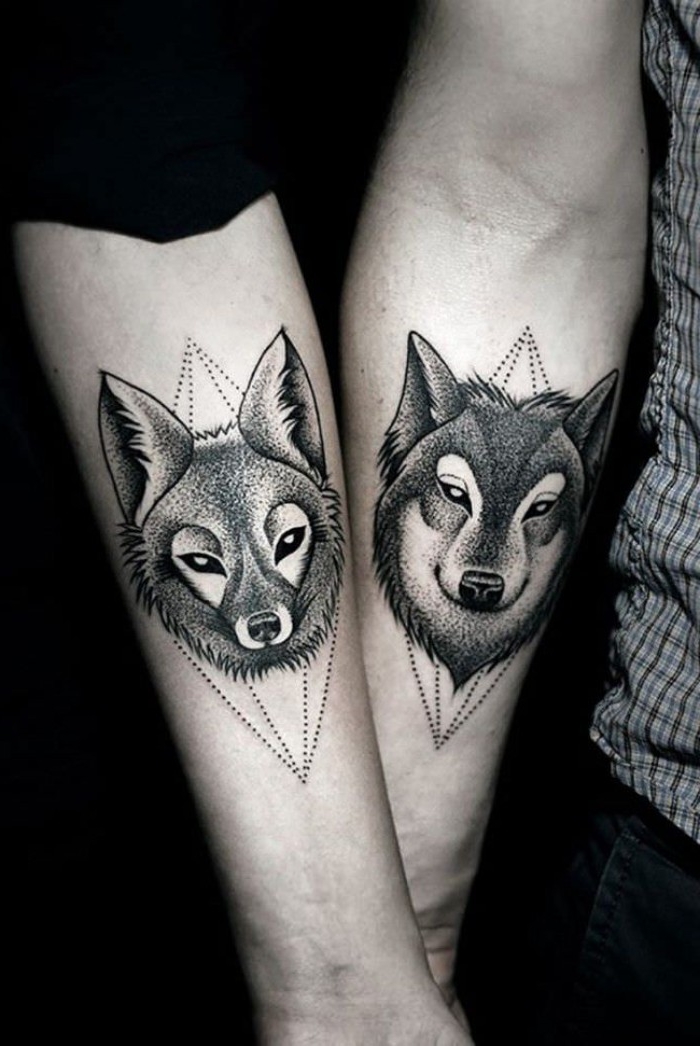
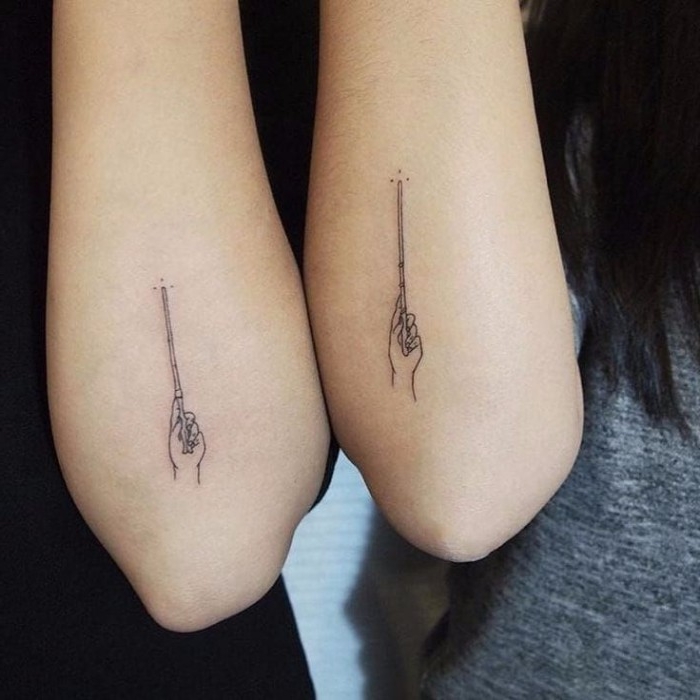
Thinking about a pop-culture pair?
Go beyond the obvious! Instead of Mario and Peach, consider more subtle nods. Think about the droids R2-D2 and C-3PO, the swords Orcrist and Glamdring from The Hobbit, or the spirit companions P-body and Atlas from the game Portal. These deeper cuts feel more personal and unique.
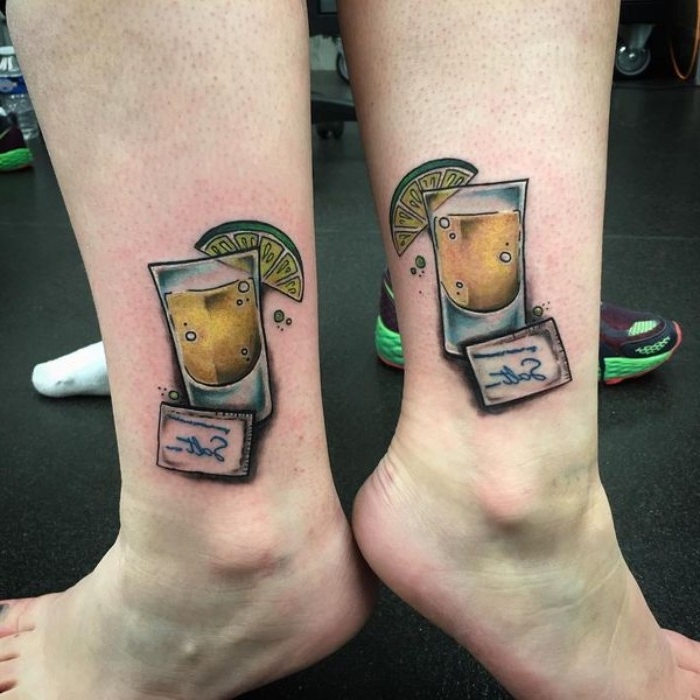
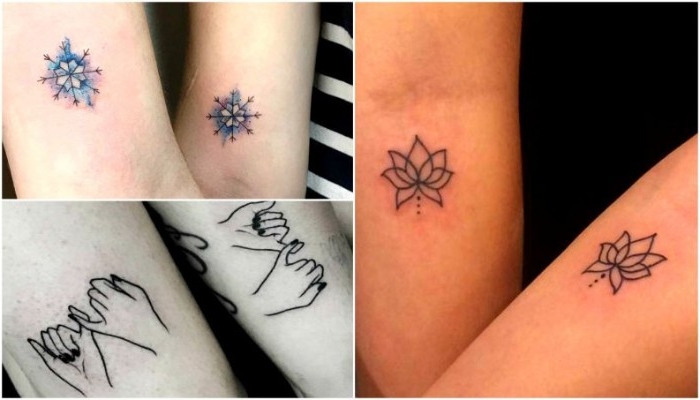

Remember that the same ink color will appear slightly different on different skin tones. On fairer skin, colors may look brighter, while on darker skin, they may appear more subdued. A skilled artist knows how to adjust their color palette and saturation to create a harmonious look between two different people, ensuring the tattoos feel matched despite natural variations.
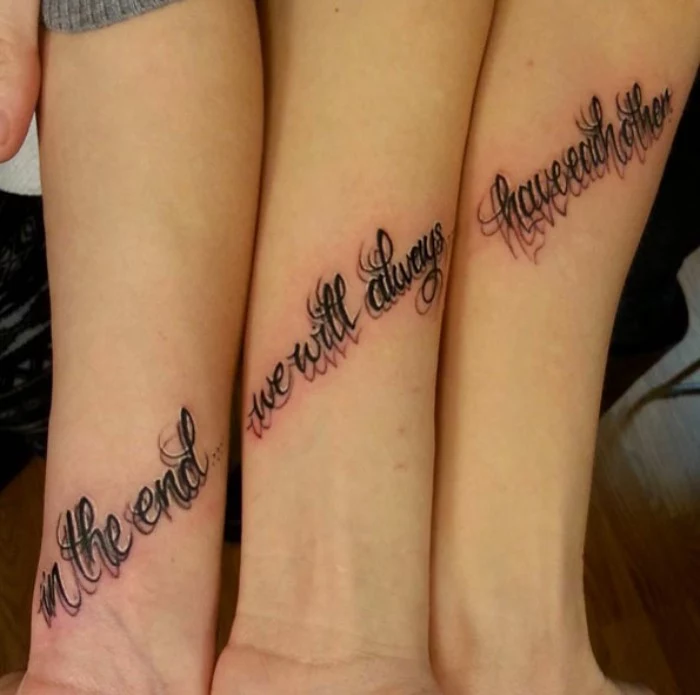
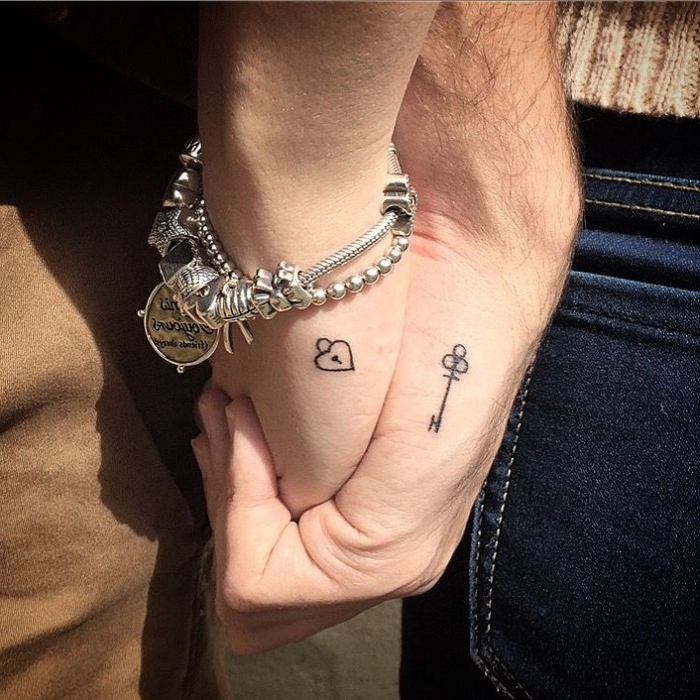
Placement Longevity: High-friction areas like fingers, the side of the foot, and palms will cause tattoos to fade very quickly and require frequent, costly touch-ups. For a lasting bond, choose a more stable canvas like the forearm, calf, or upper back, where the skin experiences less daily wear and tear.

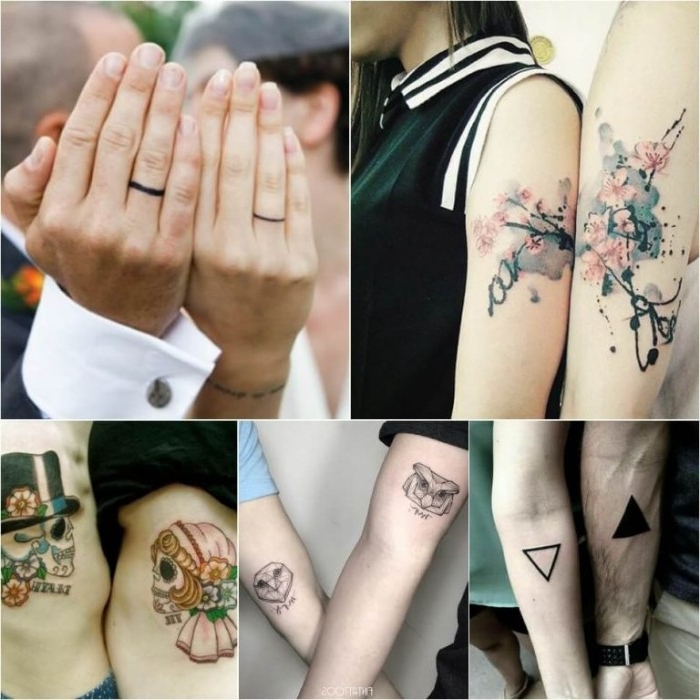
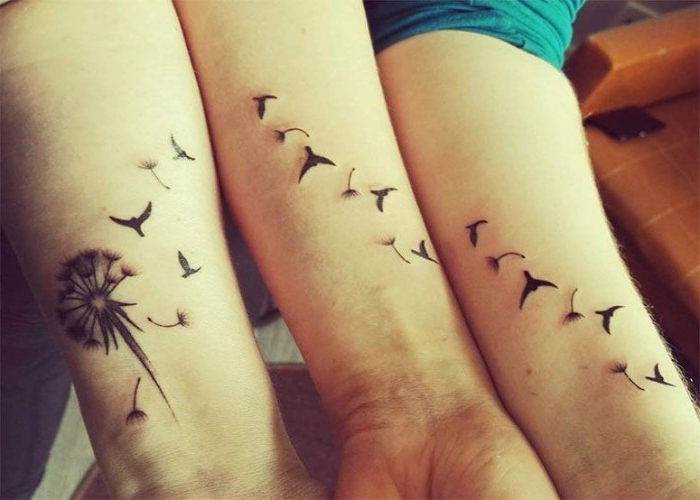
The ‘tatau’ tradition in Samoan culture isn’t just decoration; it’s a mark of commitment and belonging to a community. While you may not be getting a traditional Pe’a, the principle is the same: you are creating a permanent visual marker of your personal tribe of two.
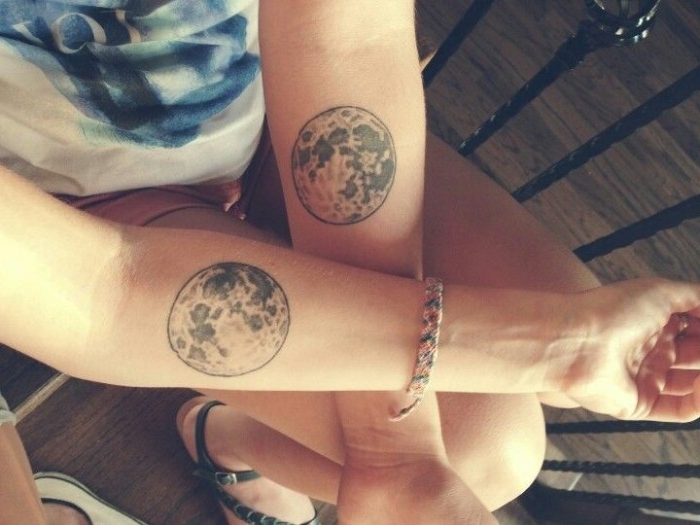
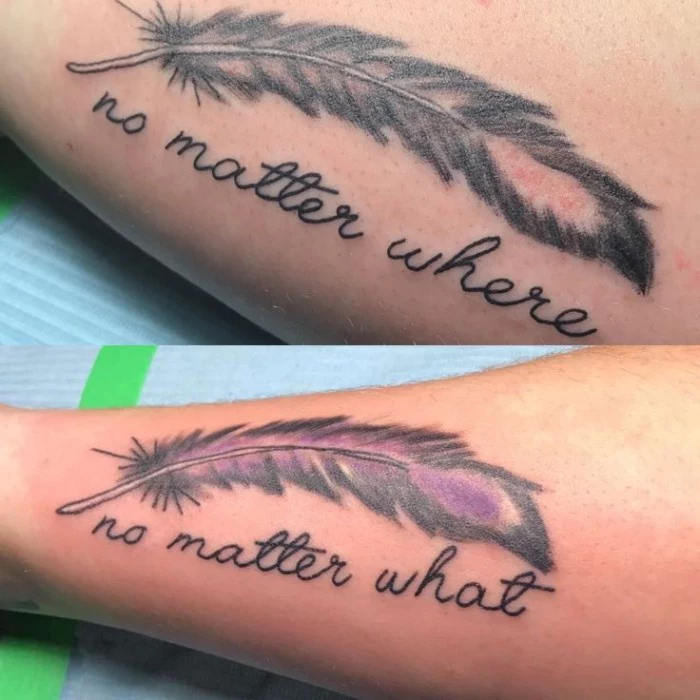
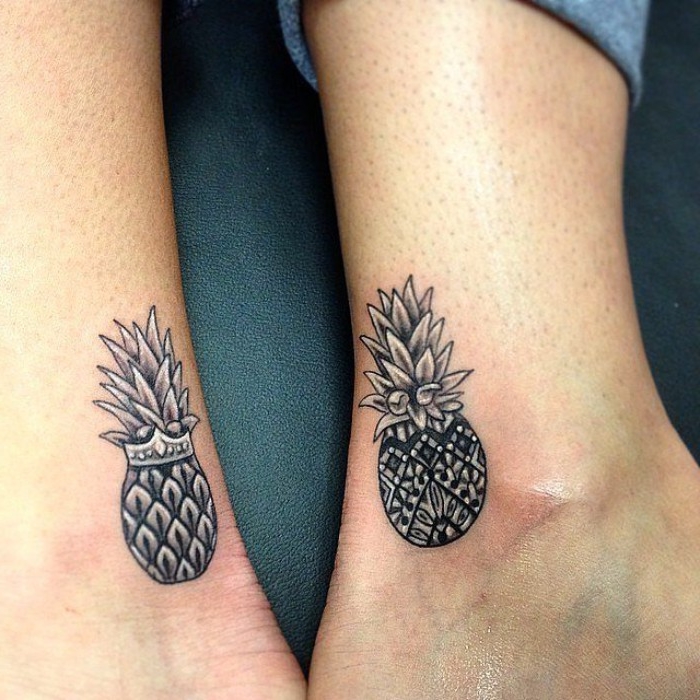
When can we go on that beach vacation?
You must wait until both tattoos are fully healed, which typically takes 3-4 weeks. Submerging a new tattoo in water—be it a pool, ocean, or hot tub—can lead to serious infection and ruin the artwork. Plan your tattoos well before or after any water-based holidays.
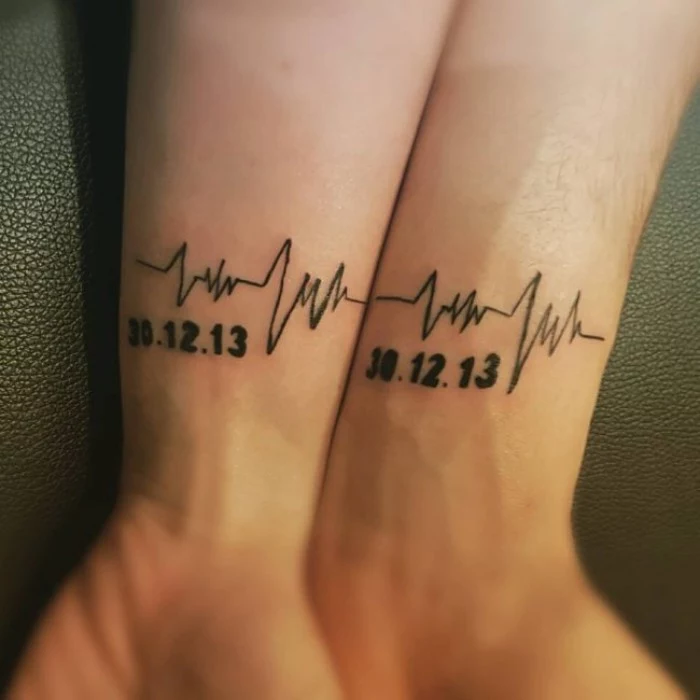
There’s a unique, quiet moment after the final wipe, when the stencil marks are gone and the redness is starting to calm. It’s the first time you and your partner see the permanent art on your skin, together. It’s no longer an idea, but a living part of you both. Cherish that first look; it’s the beginning of your tattoo’s story.

